#sultana handan
Text





#history#magnificent century#muhteşem yüzyıl#ottoman#sultanas#ottoman history#ottoman sultanas#ottoman valide#valide sultan#Halimesultan#halime sultan#halime and handan#handan sultan#sultana handan#sultana halime
20 notes
·
View notes
Text

~Mahfiruze~
Mahfiruze was the mother of first - born son (Osman) of Sultan Ahmed I
She was choosen by Handan and Gevherhan Sultanas.
Altough, the mother of the second-born son, Mahpeyker Kösem recived the Haseki Sultan rank and thus Ahmed made clear that Kösem was the favorite consort, Mahfiruze didn't fell out of favor. It is possible that Mahfiruze gave birth to Şehzade Çihangir in 1609. And for sure she gave birth to şehzade Bayezid in 1612. Mahfiruze disappears from harem registers after Bayezid's birth. She possibly died due birthcomplications. Some historians suggest that she was alive during Osman's reign and died in 1629, but there is no proof that Mahfiruze was Valide Sultan.There was a rumor that Mahfiruze was beaten and exiled for irritating Kösem but it seems unlikely that a royal mother,the mother of the first-born prince would be treated so disrespectfull.The main problem of Osman II who ascended as a young boy was that he didn't have a valide who could advise him. During his reign, Osman's wetnurse ruled the harem! Even if the rumor was true, that Mahfiruze was exiled, Osman II as the current Sultan could always recall her back to the palace! Mahfiruze is burried in Eyüp Sultan Mosque and not in Ahmed's Complex, that also suggest that she died in 1612 because the complex was finished in 1616. In 1618, when Osman ascended the throne, he built a tomb for her.
youtube
11 notes
·
View notes
Note
How would you rank the (main) non-blood Sultanas?
Hmm... Again, I would have to exclude the wives of Murad and Ibrahim; I know next to nothing about Ibrahim's harem, and as for Haseki Ayşe and Farya... Haseki Ayşe is a strong candidate for the bottom of the rankings, since she possesses the deadly combination of malice and stupidity, while Farya is somewhere in the middle. Also, with Kösem, I don't take her s2 version into account, although so far she seems pretty high, maybe even at the top. I also don't remember Defne, so people who wanted to see her here are out of luck.
Hürrem/Mahidevran - This one is kinda unfair, since they had much more time and character development than any other sultana, with the exception of Kösem (who wasted a lot of that time with NO character development, see below). I also don't think it's fair to put one ahead of the other; Hürrem is our beloved iconic drama queen, while Mahi had better character development. So yeah. The best sultanas, the most sultanas.
Halime - She did become much less interesting in the back half of the show, and also was stupid enough to trust Safiye with the life of her son that one time. With that said, I can't just ignore how strongly I rooted for her at the beginning.
Handan - She almost tied with Halime, but ultimately lost, because she lacks her charisma. With that said, she's still pretty cool as a mum, grandma and local firecracker who should really think things trough more. Also, she has very good taste in men, and almost killed Kösem that one time.
Gülbahar - I just have a soft spot for her, is all. A prime party with Satan material. My third favourite child murderer. Also, her relationship with Sinan is canon! Other sultanas could have strong subtext (Şah) or tragic yearning (Handan), but Gülbahar is a girl who can Get It. Even if Sinan himself is one of the least charizmatic villains this show has ever seen.
Safiye - An icon in her own right, as you all know. She could be higher, but ultimately I just like everyone above her more.
Nurbanu - I am not a fan personally, but I can see how she could be someone's favourite evil conniving bitch. Plus her and Selim are such an iconic couple!
Mihrunissa - She's fine, I guess. Kinda boring, if you ask me.
Mahfiruze - Annoying af, but at least had the good sense to die early, unlike...
Kösem - Going from Anastasia!Kösem to Beren!Kösem was the downgrade of the century. I am going to be extremely vindictive towards her just for that. Is the sweetest, bestest, smartest girl ever, but can't even realize that during a popular uprising, sultan might just die. Fuck her.
Ayşe Hafsa - I could say a lot of things about her, and most of them would include slurs against old women. You can see where her daughters got the very worst parts of their personality. Just... Fuck her especially.
7 notes
·
View notes
Note
Thoughts on Safiye&Anastasia? I loved them so much and regretted how their relationship turned sour. Historically, Kosem has been an ally maybe even some sort of protege of Safiye, and I would have loved if the series transmitted this as well. The red dress scene has perfectly been by favorite, accompanied by Safiye's wisdom words.
I feel the writers messed Safiye bad at some point, after ep 5. She starts as a complex individual, that can relate so much to Anastasia and see herself in this poor girl, but then due to hyperbole she becomes strictly a monster hungry for power. It does not help that the writing added characters such as Iskender or Fahriye (who was Ayse historically, a very beloved sultana as well) and created a mess just for the sake of it. Now I understand Hulya is phenomenal and they did not want to waste such a brilliant actress, but still it could have been done better (Safiye coordinating Kosem againsts Handan please, as well as training her in order to retain her political connections as best as she could, even if she had not lived in Tokpaki she could have lived a luxurious life as well)
The thing with Safiye is that she'd already gone through so much character development between her appearance at the very end of MY and MY:K Season 1. So presumably her loss of innocence and increasing ruthlessness was a process that happened in the decades between the two shows. I do think she's done a disservice in this, as it takes away a lot of nuance from her character development.
That said, as ruthless and power-hungry as she is, there is still complexity to her. She's had to do so much to erase herself that she barely has any sense of self outside of her status. I've explained this in more depth here. She also admires women like Elizabeth I and Hürrem, so she clearly has an admiration for exceptional women. Which is I think part of why she takes Nasia under her wing and why she gives Kösem her ring just before she dies.
6 notes
·
View notes
Note
How is your favorite valide sultan out of the two shows? In order of preference?
Okay back on track after finally being able to open the acc. Sorry for being VERY late!
1-Valide Kosem sultan:-
Powerful, majestic, classy , savage ,while also affectionate and vulnerable. I love that we see all of that with her! In SO2 we saw both her evilness and also her vulnerability. I certainly love how she is reminiscent of the past but she knows she needs to put on a cold facade to face the future. She is what I wanted Valide sultanas to be , She bravely faces any situation she doesn’t run away or hide (ie:- when mu rat ran away). She had every right to want to rule instead of her sons, it is quite baffling to me people back then had a problem being ruled by a strong and smart woman BUT were fine with a young boy ruling over them! That’s a diff story tho.
2-Ayse Hafsa Valide sultan:-
While , Kosem is how I wanted every Valide sultan to be, Valide Hafsa is how the system wants Valide sultans to be. She is “ideal” for the system. A loving mother and a noble queen. She is basically SS’ conscience and his biggest supporter. Unlike Kosem, she doesn’t interfere in politics and solely solves the Harem problems. While she seems blinded at times with how she is always for Ibrahim and Mahidevran (even when they fuck up) she knows they are just as “bad” as Hurrem but they aren’t as strong or rule breakers as Hurrem thus she let then be but side eyed them.
3-Safiye Valide sultan:-
Unfortunately, we didn’t see much of her as a Valide sultan. It is clear after Mehmed III death, she is only desiring power. Nothing is inherently wrong with desiring power, but the period she is showcased in is at times where she got only few things left. As a character, overall I love her but I as a valide sultan she was corrupted.
4-Halime sultan:-
We didn’t see much of her being Valide, it wasn’t showcased properly. I certainly believe if Mustafa was sane, her period would’ve been great. While, she enjoyed the luxury of being valide (like anyone would) she did try to fulfill her duties and to help mustafa ,however, luck wasn’t on her side at all. I honestly love her character, she is very consistent and it is quite fascinating how she never gave up. She would be the most powerful in another world if Mustafa and Dilruba weren’t her children.
5-Handan Valide sultan:-
This is case of writers screwing up a character so bad. She is portrayed as this pathetic cry baby woman. Much like Halime, luck wasn’t on Handan’s side either. Handan couldn’t assert dominance because of Safiye’s presence and because of how Ahmed wanted to minimize her power. Safiye is gone, Ahmed is ridiculously putting Kosem over and she can’t do anything about it. As a mother she definitely loved Ahmed so much , the writers managed to write her in the worst way possible.
#muhteşem yüzyıl kösem#kosem sultan#Ayse Hafse Valide sulta#safiye sultan#halime sultan#handan sultan
5 notes
·
View notes
Quote
It is not possible to live without being a sinner, Sultana. But betraying you was not one of my sins.
Dervish Pasha to Handan Sultana from Magnificent Century : Kosem
4 notes
·
View notes
Photo
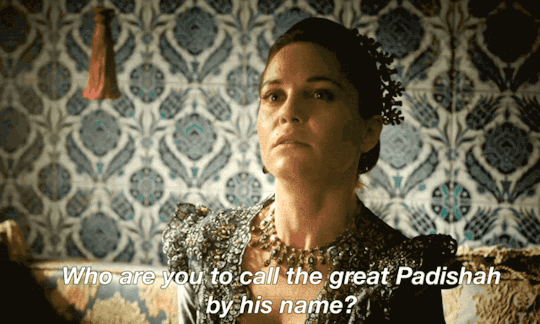






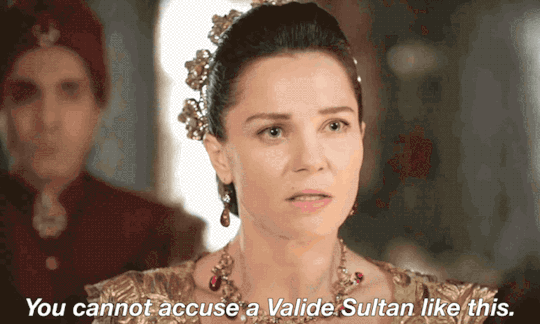


Magnificent Century: Kösem Season 1 + Sultanas Being Elitist, Part 1 (Parts 2,3,4)
#kosemedit#perioddramaedit#magnificent century kosem#Muhteşem Yüzyıl Kösem#Kösem Sultan#Kosem Sultan#Magnificent Century: Kösem#muhtesem yuzyil kosem#mck#mc: kosem#my: kosem#HistoricalDramasPlus#KosemPlus#weloveperioddrama#period drama#perioddrama#Awkward-Sultana#handan sultan#Safiye Sultan#Fahriye Sultan#Mahfiruze Sultan#kosem spoilers#Signs and Miracles#The Fire Flowers#The Power of Innocence#War of the Sultanas#Who Sows the Wind Shall Reap a Tempest
119 notes
·
View notes
Photo
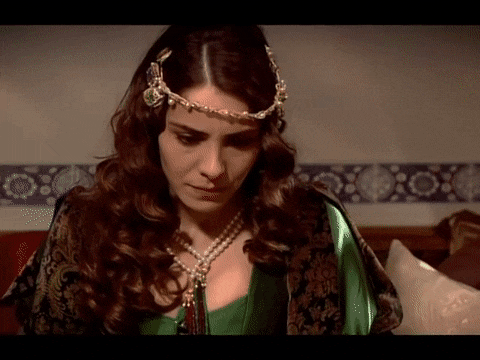

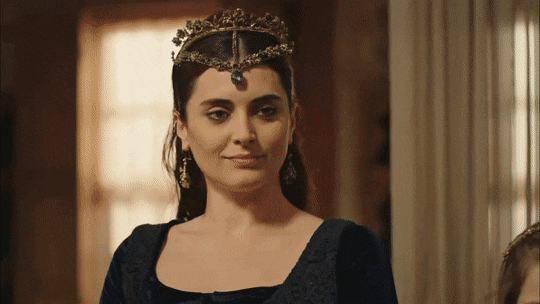


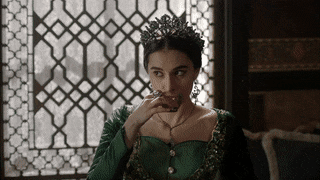
Historical Rivial Sultanas- Muhtesem Yuzyil and Muhtesem Yuzyil: Kosem
#haseki hurrem sultan#hurrem sultan#Mahidevran Sultan#mahidevran hatun#hurrem hatun#halime sultan#handan sultan#mahpeyker kosem sultan#Kosem Sultan#turhan hatice sultan#turhan sultan#muhtesem yuzyil#muhtesem yuzil kosem#magnificent century#magnificent century kosem#rivialry#rival#rivials#sultana#sultanas#enemy#period drama#history#historical drama
32 notes
·
View notes
Text



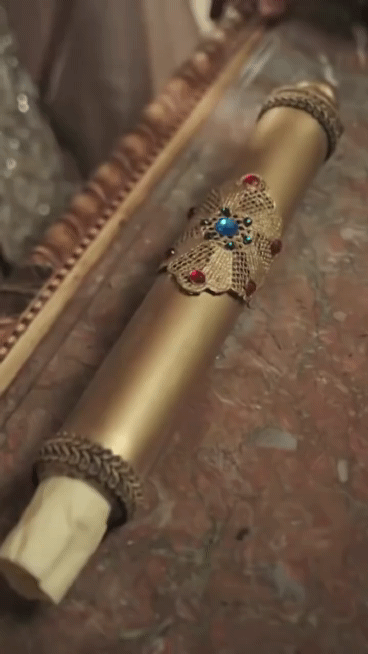




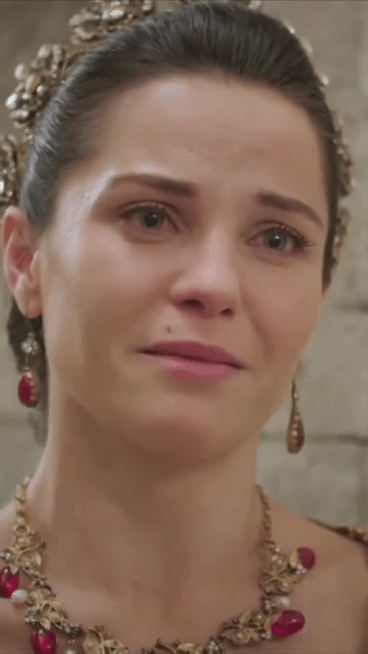

#history#magnificent century#muhteşem yüzyıl#ottoman#sultanas#ottoman sultanas#ottoman history#ottoman valide#valide sultan#sultana handan#valide handan sultan#handan sultan#handan#My gifs
5 notes
·
View notes
Text
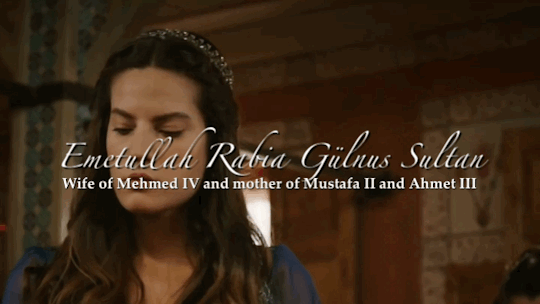





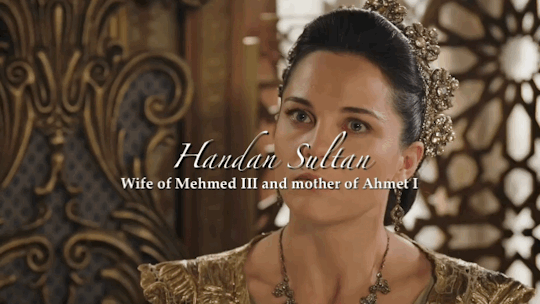

The powerful Ottoman women from the most powerful Ottoman era
Hürrem Sultan - Wife of Süleyman I and mother of Selim II + 4 Shezades and 1 Sultana. Originally from Ukraine.
Nurbanu Sultan - Wife of Selim II and mother of Murad III + 3 (or 4) Sultanas. Originally Venetian.
Safiye Sultan - Wife (or consort) of Murad III and mother of Mehmed III + 4 Sultanas. Originally Venetian or Albanian
Handan Sultan - Consort of Mehmed III and mother of Sultan Ahmet + 2 Shezades and 3 Sultanas. Originally Bosnian.
Halime Sultan - Consort and favorite of Mehmed III and mother of Mustafa I + 1 Shezade and 3 Sultanas
Mahpeyker Kösem Sultan - Wife of Ahmet I and mother of Murad IV and Sultan Ibrahim + 2 (or 3) Shezades and 3 Sultanas. Originally Greek.
Hatice Turhan Sultan - Consort of Sultan Ibrahim and mother of Mehmed IV + 3 Sultanas. Originally Ukrainian.
Emetullah Rabia Gülnuş Sultan - Wife of Mehmed IV and mother of Mustafa II and Ahmet III + 3 (or 4) Sultanas. Originally Greek.
#hürrem sultan#nurbanu sultan#safiye sultan#handan sultan#halime sultan#kösem sultan#turhan sultan#emetullah rabia gülnüs sultan
68 notes
·
View notes
Note
I really like your post about the meaning behind Kösem getting killed with a purple cloth and how you explain the symbolism of the color purple. So, it’s a silly question but, if you had to assign a color to each sultana what color would you choose and why? I think it’s called color science. To Hürrem, Mahidevran, Hatice, Mihrimah, Nurbanu, Safiye, Handan, Halime, Kösem, Haseki Ayşe and Turhan (that’s a lot sorry (~_~;) )
Thank you for liking my Kösem post as much as to ask me such an interesting question! <3 Admittedly, the first color I associate every sultana with is usually the one they wear most frequently in the series and/or the one I feel suits them the most. But I looked more into how the colors connect to personality, as well (such curious trivia!) and this is what I came up with:
Orange is the color for Hürrem in my book. Not only is it one of the colors associated with fire and we know how much that element is tied into her character, but it's also a passionate color, representative of her passionate love for Süleiman. The orange color is witty, spontaneous, eager, bold, energetic and unpredictable. It cherishes freedom and out of the box thinking, connecting with Hürrem's rebellious mindset that doesn't want to adhere to tradition. But it also tends to explore the outer world around it more than the inner world - Hürrem's character development that begins to both repress more and more inside her the more we go, showing a mask of vulnerability in front of others, and adapt to the circumstances around her, managing to perpetuate the system and make use of its rules in not so few moments as a result. Orange isn't afraid to take risks, either, and goes with their gut, which mirrors Hürrem's impulses of reaction when it comes to danger. Hürrem isn't always loyal when it comes to her relationships and doesn't always commit, especially when the relationship stands against a certain goal of hers, which is also part of the personality symbolism of the color orange. Once something unexpectedly doesn't go according to Hürrem's plan early on, she immediately springs into action and can also be forceful and domineering when under stress, along with orange. Oranges can also anticipate people's needs, telling them exactly what needs to be told to put them at ease and Hürrem has that trait in spades with her calming Hatice down and usually knowing precisely how to act in interpersonal issues, coupled with her overall ability to play with words. Hürrem has the need to be respected in her social circle and has to deal with challenges in her life regarding that, which is also connected to the color orange.
While I do associate her more with red and she has quite a few traits connected to that color, Halime appears to be more of a dark orange in terms of personality. Dark orange is, interestingly enough, the color of the opportunist taking selfish advantage in every situation and that couldn't be more perfect for her, since she represents both the strengths and the flaws of this mindset. The color also indicates over-confidence (more attributed to early Halime) and over-ambition (more attributed to later Halime) and once it doesn't succeed to prove its worth and boost its self-esteem through a plan, it develops a chip on its shoulder. (later Halime's strive to keep everything under control during Mustafa's rule and trying to put him back on the throne during Osman's, being ready for anything to achieve it and survive. Can also be applied to Halime knowing not to trust anyone unless that's for her own advantage and once that fails, she distrusts people even more.)
Red is Nurbanu's signature color in my book. It is the color of a determined and ambitious person who isn't afraid to voice their opinions and this description certainly fits Nurbanu. It also symbolizes the need of physical fulfillment that connects to basic survival instinct, which links to her motivation and relationship with Selim. Red can seem overconfident with an inflated sense of self-worth and that shows strongly with Nurbanu's background and dynamics with Nazenin and Huricihan, which cause her to show a more vulnerable, reactive side of herself, precisely because of the pride and self-worth the newfound position and previous roots give her. When Nurbanu feels, she feels strongly, which fits for the color red. But admittedly, even if so, she isn't as passionate or energetic as the normal red, so a shade of the color is even better for her: Burgundy red indicates composure, more controlled power and dignified action, which corresponds to her usual ways of action and adds to our picture of her.
I was wondering whether to choose blue or green when it came to Mahidevran, but upon research, I noticed that brown covers all the facets of her personality. It is the color of the earth (the soil), described as natural, humble and sophisticated. Just like brown, Mahidevran is steady and reliable and we could say she was "quietly confident" in her earlier days in terms of that she was willing to keep quiet and follow the rules, as long as she succeeds to win over SS in S01; in a more metaphorical sense, she wholeheartedly believed that she would win him over through being calm and patient. Brown is friendly, approachable, genuine and sincere and Mahidevran is definitely this with those she cares about - she is open to their happy and sorrowful moments and she never keeps stuff in herself for too long, her feelings towards everyone around her are honest and clear. Brown indicates both a sense of duty, hardwork and responsibility, the importance of family and family life and the wish for comfort, all of which is key for Mahidevran. Mahi is a warm, supportive, loyal and trustworthy friend, sensitive to the needs of others, which is a characteristic of the color brown, as well. Brown enjoys structure and life with everything in its place and that's how Mahidevran views tradition and looking up to traditional norms for both personal (preventing the rise of a second Hürrem and believing in the stability and peace of tradition) and massive (for the balance in the harem to not be disrupted in Mustafa's sanjack) reasons. There's also an amount of materialism in the color brown, which amounts to Mahi's overall care for her appearance and her whole rule of the harem in the end of S02. Browns don't like to loose control of situations, but will do anything to make things better and become absorbed in solving the problem and that is exemplary of Mahidevran's persistence to win over Hürrem with both her successful (Mehmet) and unsuccessful moves. (the poison) She's going to demand better for herself no matter how much she comes to repress her emotions. (E45) Browns see life as a struggle and it not being meant to be easy and Mahi shows a similar mindset in her conversation with Mustafa in E101 and patience for the victory that would come at last, extending to S04. Brown indicates taking life seriously, but with a sense of dry and that fits late S03B and S04A Mahidevran well. The dark shade of brown especially represents sadness with strength and prudence with materialism, which is just... so her, I'm beyond words.
Hatice is the best in purple and the personality symbolism of the color suits her, too. First and foremost we have the regality of it, which fits for the dynastic sultana that still tends to assert her authority and take pride in most dynastic values, taken from Valide. Just like Hatice, purple has a deep need for emotional security and helping others; it is a gentle and free spirit and has a peaceful and tranquil quality about it. S01 Hatice is more restrained and introverted and can give the impression of being shy, but we find out there's much more to her when her trope is put through deconstruction and more of her emotional state is explored. She can be more demanding and outspoken once she comes into her own. Purples can also be seen as shy due to their quieter nature, even though that's not quite the case. Purple and Hatice are both idealistic, at least initially, and dream of a life free from strife and conflict, which causes them to be ignorant of the opposite end of things when push comes to shove. Purple symbolizes one trying to find themselves (Hatice wanting to find love with Ibrahim, live in a peaceful environment), but also certain perceptiveness of people around them (S03 Hatice who figures out Hürrem's purposes to drag her down, realizes that namely Firuze is the one woman fit for SS etc.), while still seeing or wanting to see the best in everyone (S01-2 Hatice with Hürrem and Mahidevran). Purples can sometimes appear arrogant, conceited and self-indulgent when being imposed upon others' regulations and beliefs. (Hatice's usual ignorance when pulling rank; letting her anger out when anyone stands against what she stands for.) Lavender purple is the perfect shade of purple for Hatice, because it has a fragility, sensitivity and vulnerability to it, along with symbolizing love, devotion, delicacy and a romantic atmosphere.
Silver seems to match Mihrimah the best. Silvers are connected to personality dilemmas, with wisdom, responsibility and self-control assisting you to make decisions on the positive side of things, and sitting on the fence as you waft between one choice and another on the negative side of things and that is very similar to Mihrimah's dilemma to do the thing considered right when it comes to protecting her family (like marrying Rüstem, standing against Mustafa etc.). Just like silver, Mihrimah can be conceited and snobbish with a sense of superiority over others when it comes to her position as the daughter of a sultan, the fact that she's taught to value her position back when she was little and standing against fellow dynasty members as a result of this. It's a confidence Mihrimah develops all throughout the series. And yet she's still gracious and non-aggressive with strong values and morals. Silvers can be romantic and loving, but they don't let their heart overrule their head in romantic matters - Mihrimah is precisely this with all of her romantic affairs, it pains to let them go, but she does anyway, both for what she already begins to perceive as the greater good and for her own adaption to the system. Silver also has moon symbolism linked to it and since Mihrimah is the sultana of the sun and the moon, it's even better for her.
I'll give green to both Handan and Safiye, since its personality symbolism connects to both of these contrasting characters. Just like the color green, Handan has a deep need for belonging and security and can become anxious and unsettled in the strive to search for balance. Green, as well as Handan, is nurturing and caring, is like an open book and aspires for peace, not action. Green is a color of growth and that applies well for Handan and her adaption in the harem - she tries hard to get used to her new environment and role and get out of her old habits. The color is also the color of independence in Mexico and that is perfectly fitting for Safiye, because she has gotten quite a bit of an independent power of her own and this is precisely what she didn't want to let go of for so long. The growth symbolism of the color applies to Safiye when it comes to past growth, since she has already grown into her role and solidified it for herself, shown by the contrast between MC E139 Safiye and MCK Safiye. Greens are strong-willed, do not like to be told what to do and do not accept defeat easily as we see with Safiye also. Green highly encourages wealth, materialism and possessions of high price and we know how much Safiye values all those. The dark shade of green goes an extra mile in encapsulating Safiye's negative traits like striving for more wealth (and power), greed and selfish desire. (Yes, green also is the color of envy on the negative side of things, but this is neither of the two sultanas.)
Pink goes to Ayşe Haseki. Pink has a need to be accepted and loved unconditionally, just like Ayşe. It also has a maternal instinct that we see in Ayşe, especially when it comes to Kaya and her final decision. Ayşe cares for others, but certainly wants that care to be reciprocated (as she should, go honey!), has a youthful appearance that can let her look frail and vulnerable and can be indecisive, irrational and act immaturely during problems, all of which is a characteristic of the color. The main challenge pink has to overcome, is namely becoming more self-conscious and self-reliant and that mirrors Ayşe's growing perceptiveness of her situation, culminating with her last letter where she "took away everything she gave Murat". Conversely, I see this color as fitting to Gevherhan, too, just an interesting connection.
From what I've read, two colors suit Kösem well: turquoise and teal. Teal is the color of morality and renewal, which fits both Beren!Kösem's fights for justice that are primarily based on morality than anything else (specifically the Fahriye and Handan-Dervish issue), the ways people viewed Kösem after she stood up in E07 as this angel who would always save them and do the right thing and Kösem's character development as a whole where we constantly see a new side of herself, a new stage in her life. It's a supportive and rational color, controlling (mostly in terms of leadership), well-intentioned, yet reserved. (S02 Kösem always wants to do the the best possible for the welfare of her children and country, but her true nature may not be that obvious to people around her.) Meanwhile, turquoise radiates the peace, calm and tranquillity of blue and the balance and growth of green (aspects of both Nurgül's and Beren's Kösem) with the uplifting energy of yellow (Anastasia). It speaks from the heart and shares its innermost thoughts just like Anastasia. It has organizational and management skills and it influences rather than preaching and demanding, which is again Kösem's role as a leader and representative of the state and the support she has from the Jannisary and the people. S02 Kösem often thinks clearly even in a state of emergency, just like turquoise. The fights Kösem is fighting certainly take their toll on her and that can bring her not to care that much in the end (and effectively lose her innocence as her armor), which is also a personality symbolism of the color.
Turhan is totally black for me. Just like black, prestige and power are important to her and she doesn't show much weakness and emotion in front of anyone, we don't truly get to see what's beneath her mask of cold calculation. Black is strong willed, determined and likes to be in control of themselves and the situations around them, all of which are characteristics of Turhan. Turhan doesn't fully trust anyone or anything, keeps people at distance, consistently having an ulterior motive behind their back and that and the way she operates also fit the color: she is methodical, making sure everything is completed as required, down to the last detail. That, along with Kösem's weakening power, certainly was a part of her success.
#magnificent century#muhteşem yüzyıl#muhtesem yuzyil#ask#elenahoward#i tried to put the colors different from the given ones on Tumblr into the text#but it didn't work
27 notes
·
View notes
Photo










Sultanas in Magnificent Century Kösem: Handan Sultan ❀
39 notes
·
View notes
Text
Portrait of Kösem Sultan / Köszem szultána portréja
Origin and way to the palace
Kösem Sultan, according to most accounts, was of Greek descent, presumably born and raised on the island of Tinos until her abduction. Legend has it that she was called Anastasia and was the daughter of a priest, but there is no evidence to suggest this. It was fondly rumored for high-class concubines such as Kösem or even Hürrem that they were children of priests. The reasons for this are to be found in religious differences. The exact date of her birth is unknown, but she may have been roughly the same age as Ahmed I, so she was most likely born between 1587 and 1590.
There are several legends about how and when she got into the imperial capital. What is certain is that when she entered the harem, she was given the name Mahpeyker, which means moon-faced in Persian. Because the concubines were fondly named for their external or internal characteristics, her name suggests that Mahpeyker was a girl with a round face, light skin, and perhaps even blonde. Some say a Bosnian beylerbey presented the girl to the young sultan. According to another well-known legend, Mahpeyker was a servant of Handan Sultan, during Mehmed III's lifetime. That's how she got close to the young Prince Ahmed, with whom they fall in love and flirted with each other. As soon as Handan realized the relationship, she exiled the girl as their actions were not appropriate. Mahpeyker thus certainly spent the next few months in exile at the Old Palace.
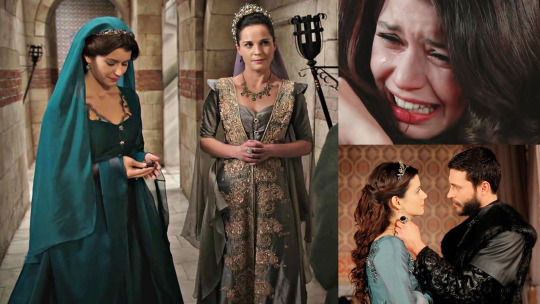
Rising
Mehmed III died in December 1603 and Prince Ahmed became the next sultan, as Ahmed I. The first few months of his reign were very chaotic, instead of him, his mother and teacher ruled as regents, and in addition, Ahmed fell ill with smallpox. From the spring of 1604, however, he increasingly took control and presumably recalled Mahpeyker from exile at that time as well, or it was at that time that the girl was given to him as a gift (depending on which legend is true). Mahpeyker soon became pregnant and in March 1605 gave birth to her first child, Mehmed. Mehmed was not Ahmed’s firstborn son, so Mahpeyker needed all her talents to save her son’s life. In any case, the fact that Ahmed had not executed his younger brother, the young Mustafa, could give her hope. The survival of Mustafa meant the end of the law of fratricide, which in turn guaranteed the survival of Mahpeyker's son.
Mahpeyher soon became the first woman of Ahmed's harem, as Handan Valide Sultan died in November 1605 after a long illness, and the mother of Ahmed's eldest son was not as loved by Ahmed as Mahpeyker. Based on harem documents, Mahpeyker received the rank of Haseki Sultan from the Sultan in late 1605 or early 1606, making it clear that the mother of his second son was Ahmed's favorite concubine. She also received a featured daily salary of 500 aspers, which later increased to 1,000 aspers. Based on reports, it can be attributed to this event that Mahpeyker decided to choose a new name for herself. Her new name was Kösem, which means "leader". The name made it clear that Kösem considered herself a leader. This is also supported by subsequent reports. The Venetian ambassador wrote Kösem as "a woman of beauty and wisdom who has a lot of talent, who sings excellently, and whom the Sultan loves more than anyone... Not everyone respects her, but in some matters, everyone listens to her word, for she is the Sultan's favorite, whom the ruler constantly wants to know by his side."
The former account suggests that there may have been tension between Kösem and the other consorts. We must admit though, that it would not be surprising, especially knowing that Mahfiruze was the mother of the firstborn prince, yet Kösem got the rank of Haseki Sultan and she clearly rose above the other concubines. Another account also supports this, as the Sultan once beat a concubine for irritating Kösem. True, after beating the woman, he ordered the doctors of the harem to treat her properly because of the old love between them. More likely, however, contrary to legend, this consort was not Mahfiruze, but a lesser important and influental woman.
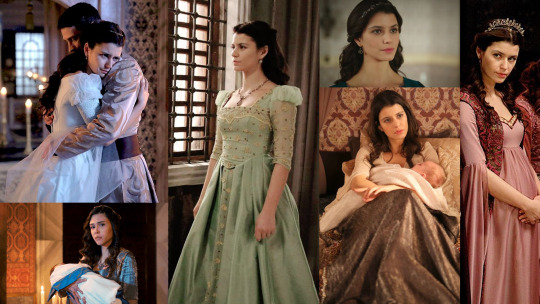
The chief consort
Kösem and Ahmed had a great number of children and from the birth-date of the children, we can conclude that Ahmed was mainly having sex with other concubines when Kösem was pregnant. In addition, it appears that for a few years after the birth of Prince Mehmed, Ahmed had a monogamous relationship with Kösem or he was careful not to have children with others. This is suggests by the fact, that after the birth of Ahmed’s first three children (Osman, Gevherhan, Mehmed) who were born from three mothers, from 1605 to 1609 only Kösem gave birth to children: Ayşe, Fatma and Hanzade Sultanas arrived in quick succession. From then on, after 1609 Ahmed regularly slept with other concubines from whom his children were also born. Kösem finally got pregnant again at the end of 1611, so then Ahmed called her first concubine Mahfiruze again. In 1612 thus two more princes were born from the two concubines, Murad and Bayezid. After the birth of Bayezid, Mahfiruze presumably passed away, so Kösem remained the only influential woman in the harem. Maybe the increase in her salary happened this time. Kösem gave birth to her last two children in 1614 and 1615, so the dynasty was expanded by two more princes, Kasim and Ibrahim.
The fact that Kösem had many sons and did not own the eldest son made it clear that she had to fight to keep Prince Mustafa, Ahmed's brother alive. For if Prince Mustafa survives, the succession system will change forever and her sons may survive. Even the ambassadors remembered her actions. Kösem knew the nature of Sultan Ahmed well, so she knew exactly what might affect the sultan. Ahmed tried to execute his brother three times before giving up permanently and leaving him alive. It is not known exactly what convinced the Sultan, but the constant argument of Kösem for keeping Mustafa alive certainly helped a lot. Ahmed was a very religious man who believed in fate and thought he was a chosen one, for he found no other explanation for the fact that, as a not first-born son, he eventually ascended the throne. Kösem taking advantage of this argued that only Allah has the right to choose the next ruler, and as Ahmed did not become a sultan either as a first-born, he must show compassion for his non-firstborn brother as well. Perhaps Kösem also pointed out that as soon as Sultan Mehmed III intervened in fate and executed his child, he himself soon died. Whatever Kösem and other supporters of Mustafa said, Ahmed eventually left his brother alive but did not officially change the system of succession. He left the decision to Allah.
Kösem tried to influence Ahmed in other matters as well, but she knew exactly how far she could go. For Ahmed did not want to be controlled by women, Kösem tried only carefully to control the Sultan. Although many believe that Kösem was influential in political fields already in Ahmed’s life, this is certainly not true. Kösem was not politically influential during Ahmed’s reign, only in the harem did she enjoy prominent influence thanks to her Haseki rank and the support of the chief eunuch, Haci Agha. The only politically significant step of Kösem was to push the Sultan to marry off their firstborn daughter, Ayşe to one of her faithful supporters, Nasuh Pasha. However, she could not enjoy the benefits of the marriage for long, as Nasuh Pasha was executed by the sultan soon after.

The tragedy
Sultan Ahmed had been a sick man all his life, but by 1617 his illness had become very serious, the sultan must have been in constant pain. There are malicious, completely unbelieving rumors that Kösem was behind Ahmed's illness. However, this is simply not true and cannot be true. Kösem was the one who lost as much as possible with Ahmed’s death. Two princes also stood in front of her sons for the throne, Ahmed's brother, Mustafa, and Ahmed's firstborn son, Osman. Osman lost his mother around 1612, and Kösem wanted to turn the situation to her advantage. She believed that raising Osman as her own son from then on could save the lives of her own children if Osman would sat on the throne one day. That is why Kösem spent a lot of time with Osman, taking him to carriage rides regularly when she visited Safiye Sultan in Old Palace with her own son, Mehmed. However, Ahmed knew Kösem well, he knew what her intentions were, so he forbade her to meet or even talk to Osman and his younger brother (Bayezid most probably).
Ahmed's condition was already in crisis in November 1617, and the 27-year-old sultan finally died on November 22, 1617. His death caused chaos, as the members of the divan did not know who to put on the throne. Both possible candidates were completely unfit to rule. Prince Mustafa was mentally ill as a result of many years of solitary confinement, he was like a small child in mind; Prince Osman was only 13 years old and was without a strong mother who could support and guide him. Eventually, under the pressure of Haci Agha and Seyhülislam Efendi, Prince Mustafa was made Sultan, hoping that his condition would improve if he could be among people again. With the accession of Mustafa, all of Ahmed's concubines, including Kösem, and their daughters retreated to the Old Palace. However, her sons were separated from her and all the princes were kept in solitary confinement in the kafes. We can only imagine how much pain it could have been for a mother to lose her partner, being torn apart from her sons. Kösem was also very worried about the lives of her sons.
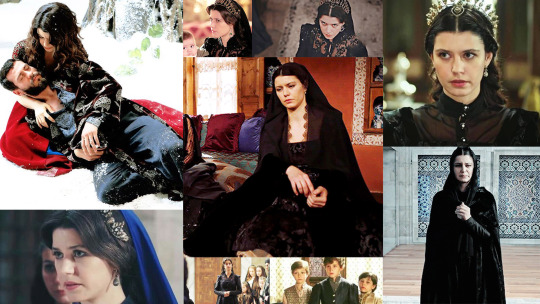
False relief
Due to the unfitness of Sultan Mustafa, he was dethroned and locked up again in 1618. The new sultan became Osman II. The sons of Kösem were still locked up, but Osman did not forget how Kösem cared for him in his childhood. The young sultan regularly visited Kösem at the Old Palace. Based on these, maybe Kösem thought that her sons are safe.
However, Sultan Osman was surrounded by bad advisers who only cared about their own interests. Due to this and the unstable political situation, Osman II executed his brother, Prince Mehmed, in 1621. Osman was not liked by his soldiers, his supporters were also unpopular, but Prince Mehmed was a really good candidate for being a sultan with a strong mother, like Kösem. The young sultan Osman feared deposition and it was certainly this fear that drove him into the fratricide. But with this choice, he also signed his own death sentence. Osman was dethroned by the Janissaries in 1622 and was brutally executed. The main supporter of the dethronement was the mother of Sultan Mustafa, Halime. Some say from the background, Kösem also supported Halime. There is no evidence for this, but the assumption seems quite logical.
After the assassination of Osman II, Mustafa and his mother, Halime, reigned again. However, the second sultanate of Sultan Mustafa was no more successful than the first. The statesmen and people could not forgive the brutal execution of Osman, so Mustafa was once again deposed and in 1623 the time of Kösem came.
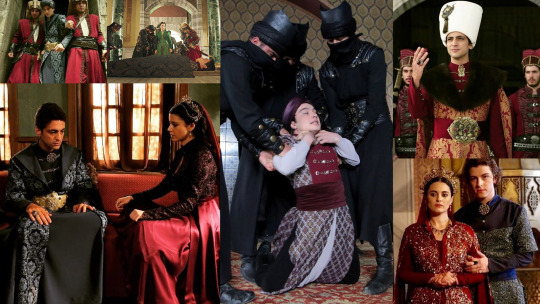
The regent
After the dethronement of Mustafa, the barely 11-year-old Prince Murad became the new Sultan, as Murad IV. However, given his young age, his mother, Kösem, became the regent instead. It is clear from her correspondence with the Grand Vizier that Kösem wanted to rule as a regent by accompanying her son to every event so that she would appear in the audience room of the divan with him also. She made this request to the Vizier, who, in turn, did not allow Kösem to do so, citing traditions and asked her to forget this. Kösem at that time agreed to this and worked from the background. Every report of this time talks about Kösem in a very nice way. They point out that she is not at all like Mustafa I’s mother, as she is a smart, well-versed politician, a wise and thoughtful woman who has already demonstrated in Ahmed’s life how strong a spirit lives in her.
With so much pain behind her, with Murad’s accession to the throne, she was finally able to meet her sons again and she believed their lives would finally continue in a calmer period. Kösem and her sons could not live together for almost six years though, presumably only met during the holidays. This certainly affected her relationship with her sons. Murad was a difficult child to handle, and several letters of Kösem have survived in which she complains to the Grand Vizier about how much she does not have the strength to fight with Murad and how much he does not listen to her words, and sometimes he even refuses to see her for days. In addition to the wedge of isolation between them, their similar personalities did not help much either. They were both leading individuals, with a very strong will, so they had a hard time getting along with each other. They argued with each other many times, after which Kösem was the one who wanted to reconcile. After one of their big quarrels, for example, she gave Murad a horse, and at other times she organized a huge ceremony for him. In addition, Kösem has regularly expressed her concern about Murad’s health, suggesting that perhaps Murad was already struggling with health problems at the time, as was his father.
Kösem although ruled for a very long time, there is almost no information about her regency. It is so certain that Kösem has always enjoyed the support of the Janissaries throughout her life. Statesmen came and went but the Janissaries always stood by her. Why? Kösem seemed like a sure point in chaotic times, and because on a delicate issue, she sided with the Janissaries immediately after the accession of Murad. With each accession to the throne, the sultan distributes money among his soldiers, but the statesmen did not want to fulfill it when Murad ascended the throne. They thought that this money had been paid too many times in the last few years, given that the sultans just came after each other in a short row. Kösem, however, did not agree with this and paid the money for the Janissaries. And in gratitude for this — and certainly for the money later delivered to them — they stood by the side of Kösem throughout her life.
About Kösem's political decisions, little has survived. Her remaining letters make it clear to us that she worked closely with the pashas and the decisions were discussed together. The leading pashas wrote their letters directly to her, which also proves that every thread ran together in the hands of Kösem. In essence, she was actually steering instead of her son, not along with her son.
From Ahmed's death, the empire gradually fell into anarchy, which couldn't be stopped even by the otherwise fairly well ruling Kösem. They lost several important areas and tried in vain to recapture them without success. Furthermore, Abaza Mehmed Pasha, who revolted after the execution of Osman II, despite the fact that everyone was punished who were accountable for the murder, refused to recognize Murad as his new ruler and continued his rebellion. Nor could this be suppressed by the pashas sent after him. To make matters worse, in 1625 a plague broke out in the capital and killed more than a hundred thousand people. Then in 1628 Murad also became seriously ill, lying in bed for weeks. His exact illness was not revealed, but some say that was when his epilepsy began. The only good thing happening in that year was the fact that they were able to capture Abaza Mehmed Pasha and stop his rebellion.
Kösem tried to maintain the peace of the empire to her best efforts, and for this, she was forced to turn a blind eye to certain things. Such was the case with growing corruption. This generated a lot of controversy between her and her son. For Murad had peculiar ideas of reign, his role model was Selim I, who held everything in his own hands and ruled the empire with iron tightness. In addition, Kösem herself gave big influence and power to the pashas she favored, which has provoked resentment from many. For example, her son-in-law, Fatma's husband, Hafiz Ahmed Pasha, took up an important position as a Janissary officer, which was too much even for the Janissaries who otherwise loved Kösem.

Valide Sultan
In 1632, after the appointment of Hafiz Ahmed Pasha, a Janissary revolt took place, during which the rebels executed the Grand Vizier and the close friend of Sultan Murad, Musa Çelebi. As a result, in May 1632, Murad took control and resigned his mother from the regent position, and began to rule himself. Kösem did not object, she stood aside, but she tried to help her son, to show him the way. Murad didn't appreciate it though in the slightest and didn't listen to his mother's advice. Murad was compulsively trying to keep his mother away from politics, and it is clear from his actions that he was disturbed by his mother’s great influence, the fact that in recent years his mother has had much more power than him, the sultan. That is why, as soon as he took power Murad tried to replace his mother's men, such as his own brother-in-law, Hafiz Ahmed Pasha, who had already been mentioned. With this he could withdraw from his mother's influence to begin his absolute rule. The relationship between the two of them was probably marked by the Janissary rebellion of 1632 forever and because of this, they could not get closer to each other later either. Kösem in the years of Murad’s reign, thus essentially functioned only as a valide sultan, administering the harem and dealing with her charitable projects.
Kösem had a good sense of winning people. She often distributed donations to those in need, and visited prisons every year, where she paid the debt of those who were imprisoned for debt; she helped poor families to marry off their daughters; she freed her own slaves after two years of service and took care of their marriages. Her charity is undoubted, but it is also important to mention that she regarded her former servants as a kind of spies. She kept their husbands in check through the women who were extremely loyal to her. Thus, in addition to helping many with a good heart, in some cases, these charitable acts also served her own interests. This was not uncommon anyway, every other sultana used these marriages to serve their own interests.
Kösem was worried a lot for her son, as Murad has divided the people a lot. After many years, he was the first sultan to lead a successful campaign for which the people loved him. At the same time, he ruled with excessive cruelty and wrote hypocritical laws. He sentenced to death, for example, those who drank despite the alcohol ban regulation while he himself became increasingly immersed in alcoholism. In addition to Murad’s alcoholism, he was certainly paranoid and depressed, due to his childhood traumas and the fact that his sons died in a row. Some also blame Kösem for the early death of Murad’s sons, but there is no evidence to that. In his writings, Evliya Çelebi clarifies that all of Murad’s sons were born in poor health and therefore died shortly after their birth.
Even though Murad didn’t really heed the suggestions his mother, Kösem never gave up and tried to support her child in everything. Thus, for example, when Murad was away from Istanbul, she thoroughly reported that someone had not followed his instructions. She did so even when they did not want to carry out an execution-order issued by Murad.
Despite the fact that Murad only was alive thanks to the abolishing of the law of fratricide, he himself decided that the old system should be brought back. For this reason, after his successful campaign in Revan, he executed his two half-brothers, Bayezid and Suleiman, in 1635, and three years later, after his campaign in Baghdad, his full-brother, Prince Kasim. The life of the youngest brother, Ibrahim, was saved only by the prince's troubled mind and the supplication of Kösem. The fact that Murad wanted to get rid of all his brothers may point to two things. Either he had completely lost his sanity and wanted the end of the dynasty, or he had at least one living son during this period for whom he wanted to clear the way.

Second regency
Murad suffered serious injuries during the campaign in Baghdad, and his alcoholism, cirrhosis caused by his alcoholism, and his chronic illness all worsened his situation. Some say Murad ordered the execution of Ibrahim while dying, but Kösem prevented him from doing so. Either way, in February 1640, Sultan Murad died in the Revani Pavilion, exactly where he had executed his younger brother, Kasim not long before. By his death, the only man in the dynasty alive was his younger brother, the mentally unstable Ibrahim. Ibrahim was completely unfit to rule, like his uncle Mustafa I, he himself struggled with mental problems. However, unlike Mustafa, Ibrahim was paranoid insane. When he was told that his brother was dead, he could not believe it and refused to sit on the throne until he could examine his brother's dead body himself.
In the first years of Ibrahim's reign, Kösem was able to handle the Sultan well and gave him concubines to deal with them instead of other kinds of stuff. Meanwhile, she herself ruled with the Grand Vizier, Kemankeş Kara Mustafa Pasha, instead of his son. Although Kösem and Kemankeş Kara Mustafa Pasha did not like each other and even they constantly rivalized, they still ruled excellently together for the sake of the empire. This regency may have been easier than the previous one, for the empire was relatively at peace, and Kösem as an experienced, mature woman could easily rule. In addition to state affairs, she also tried to oversee the affairs of the harem in all aspects. Thus, for example, she had a confrontation with Murad IV's Haseki, Ayşe. Ayşe wanted to marry her daughter, Esmehan Kaya, to the Silahdar Mustafa Pasha, to whom Murad had promised the girl. Kösem, however, chose someone else, from her own trusted men. The debate between the two women went very far and even Kaya herself did not want to marry Kösem's chosen one, but Kösem did not give up and in 1644 forced her - otherwise favorite - granddaughter to marry the very old Melek Ahmed Pasha.
Over time, Ibrahim came under the influence of a certain Cici Hoca and rebelled against his mother’s rule. Cinci Hoca was a religious leader in occult sciences who took advantage of the sultan’s mental problems. As a result, the Sultan executed his Grand Vizier in 1644 and exiled his mother. He originally intended to send his mother to the island of Rhodes, but eventually, his concubines persuaded him to send him only to another palace. Kösem spent the next few years there in exile, but during that time she also corresponded regularly with the statesmen and tried to keep everything under control. She probably also wrote her well-known letter to Hezarpare Ahmed Pasha here, saying, "In the end, he would leave neither you nor me alive and we would lose control of the state again, thereby destroying our society." The relationship between Ibrahim and Kösem deteriorated so much that Ibrahim wanted to punish his mother at all costs. For this, he deprived Ayşe, Fatma, Hanzade, and Esmehan Kaya, of all their possessions and forced them to serve his new wife. So basically he punished Kösem through her daughters and favorite granddaughter.
Ibrahim's insane rule threatened more and more people. The sultan executed people for almost no reason and gave high positions to those who were completely unfit. The situation deteriorated to the point that in 1647 Kösem and the new Grand Vizier, Salih Pasha together with the Seyhülislam Abdürrahim Efendi, tried to depose Ibrahim, but they failed. The following year, both the Janissaries and the Ulema joined the rebellion, and on August 8, 1648, the mad sultan was easily deposed and imprisoned, and his followers were removed from their positions. They had to decide the fate of Sultan Ibrahim soon, but it was not easy. There used to be a mad sultan who was simply closed up after his dethronement, so this could have been possible in the case of Ibrahim also. However, Ibrahim caused pain to too many, executed too many innocent, and simply had too many supporters to keep him alive.
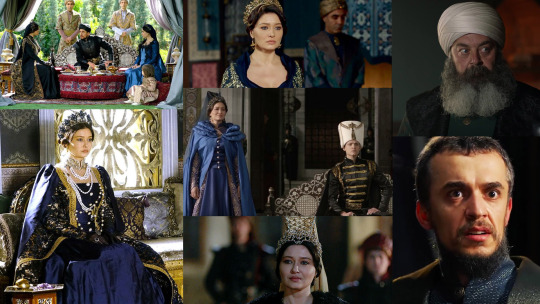
The broken mother
Everyone demanded the execution of Sultan Ibrahim. Kösem Sultan met with the statesmen at Topkapi Palace to discuss with them what Ibrahim's fate should be. They negotiated for hours, but Kösem all along refused to gave Ibrahim's eldest son, Mehmed to the rebels, so they could not name him sultan. Eventually, the statesmen convinced Kösem, as she was forced to realize over time that her son posed a potential threat to everyone: her, her children, statesmen, soldiers, the entire empire. Kösem didn’t have much choice but to agree to the execution of her son, yet many of the people nowadays condemned her decision. However, we must recognize that whatever did or said Kösem, Ibrahim would have been executed anyway. Kösem, however, with this decision, cared about the interests of the empire, she acted as a ruler and not as a mother. It was a decision similar to the execution of Prince Mustafa in the case of Suleiman I. A true ruler is not only a father or mother to their children but also their superior. On August 18, 1648, Sultan Ibrahim was executed and his eldest son, Mehmed IV became the new sultan.
Although Kösem's decision was logical and the only good decision for the empire, she herself seems to broke under the weight of the decision. After the execution of Ibrahim, she announced her retirement to the Old Palace, but the statesmen did not allow her. They convinced her that the empire needed her as regent, once again, for the last time. Mehmed was only 7 years old at the time, and his mother was in his early twenties, too young to act as a regent. Kösem accepted the ask of the pashas and again she became the regent of the empire. From her actions and the changes in her personality, we can conclude that it has become her obsession that she is the only one who can rule the empire properly. After the tragedies that befell her, it is perhaps not surprising that such a mental problem has emerged.

The tyrant
Although the statesmen themselves asked Kösem to rule, over time they had to realize that this Kösem was not the woman they had know before. Nonetheless, they expected Kösem to teach Turhan Hatice Sultan and the little Sultan Mehmed how to handle political affairs properly. So they would have expected a kind of training from Kösem, but instead of it, she wanted to decide everything herself, dismiss the statesmen who contradicted her.
More and more people began to debate the right of Kösem for the ruling, one of her well-known divan speech is also from this period. Then Kösem accused Grand Vizier Sofu Ahmed Pasha that he wanted to kill her, then continued, "Thank God I saw four rulers and I ruled for a long time myself also. The world will neither collapse nor reform with my death." Although her speech suggest that she tried to minimize her own influence and importance, she did not act like this otherwise. At the same divan meeting, Kösem confronted with Karaçelebizade Abdülaziz Efendi for not fulfilling the order given by the sultan immediately. Instead of fulfilling it he asked the sultan, "My dear, who taught you to say such things?". Kösem said that such a derogatory speech towards the sultan is unacceptable, and anyway, how did Karaçelebizade Abdülaziz Efendi think that it was not the sultan who invented what he said?! It is clear, then, that Sultan Mehmed was seen by everyone as a kind of toy. Kösem used the child as her own puppet, and her opponents recognized this exactly, so they were fought with her through not fulfilling her words coming from the sultan.
She also ignored Mehmed's mother, Turhan Hatice in the harem. She did not give the general respect she deserved, did not let the young woman to control of anything or rule the harem, which actually as a valide sultan, was her right. But Turhan did not give up. The harem was torn in two parts, to the supporters of Kösem and the supporters of Turhan Hatice. Both sides had their own chief eunuch, true that the more influential eunuch, Suleiman Agha was on Turhan's side. It says a lot that even then they were not able to defeat Kösem within the harem. People did not know whose instructions to follow, which caused immense chaos within the harem. And although the title of Valide Sultan rightfully belonged to Turhan Hatice as the mother of the Sultan, the colloquial language referred to her only as "small valide," while Kösem was "great valide." Kösem also kept the valide sultanas usual 3,000 aspers daily salary for herself, while Turhan was only allowed to get 2,000 aspers for a day.
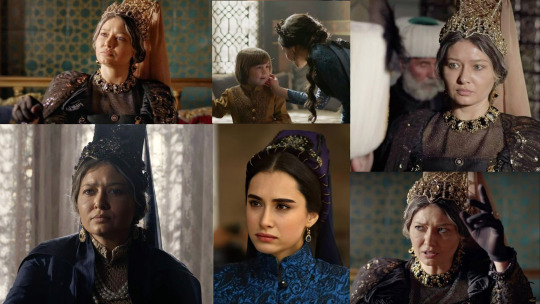
The inevitable end
Over time, the strife between Kösem and the statesmen escalated to the point that, with the support of Turhan Hatice, the statesmen tried to remove Kösem from her position. Kösem in response planned to dethrone Sultan Mehmed IV and put her other grandson on the throne instead. To do this, she wanted to let the Janissaries into the palace to carry out the coup at night, which is why she left the gates of the harem open for the night. However, her plan was revealed to her enemies, according to some by a servant named Meleki Hatun. Others said Kösem did not want to dethrone and execute Mehmed, she just wanted to scare him; again others think Kösem did not plan anything, just her enemies had enough of her and they came up with a story to justifying their rebellion against Kösem. However, the best known and most supportive story is still that Kösem wanted to strip Mehmed, so I continue on this line.
Thus, as soon as the men of Kösem opened the gate on September 2, 1651, the people of Turhan Hatice, led by Chief Eunuch Uzun Suleiman Agha, closed it and sent an execution squad to the residence of Kösem. In addition to the support of all existing statesmen, Turhan even had the support of the Spahis during the events, while Kösem was only supported by some Janissary corps. Turhan's people knocked on the door of Kösem when they arrived at her apartment, Kösem thought her own people had come, so she shouted out at them, "Have you come?". For this, however, instead of the voice of the Janissaries, she heard the voice of the eunuch Suleiman Agha, from which she understood that she lost and started to flee. It’s not exactly known how she got out of her apartment or did she even get out from there at all because the descriptions don’t match. Some said she hid in a closet inside her apartment, others said she tried to get to the Janissaries, but she couldn’t get through the closed gate, so she finally hid in the room next to the gate. During her escape, some of the concubines also tried to rush to her aid and blocked the execution squad, and an older woman shouted that she was Kösem Sultan to gain time for her. She tried in vain, for though the executioners did not know the face of Kösem, Suleiman Agha did, so they quickly continued their way after Kösem.
Eventually, Kösem hid in a closet from which the edge of her dress protruded, revealing her hiding place. When they found her, she threw money at his executioners, trying to buy her freedom, but she had no chance against Turhan's loyal men. Legend has it that when the men tried to hold down the valide they ripped out of her ears the diamond earrings she received from Sultan Ahmed; her clothes were also torn as they tried to take away the precious ornaments from it. Even beyond her sixties, Kösem fought very hard against her executioners but in the end they overcame her. Some say she was strangled with her own hair, others said with a curtain. After the first strangulation attempt, she was still alive but did not survive the second one. We don't know who was the one who decided that Kösem Sultan should die. The execution may appear to have taken place lawfully, based on the fetwa of Seyhülislam. However, the temporality is somewhat disturbed by the fact that the original Seyhülislam was replaced by one of Turhan’s trusted men at the same time when the execution took place. Precisely because of this, and because of the unusual brutality of the execution, there may be the possibility that perhaps the execution of Kösem was not originally planned, but the events slipped out of control, and in the heat of the moment the guards executed her. To legalize the events, they produced a fetwa with the new Seyhülislam soon after.
To prevent any resistance, Turhan Hatice and her men removed all statesmen who would have endangered them during the night. And the ones who resisted were forced to surrender with a fetwa. Eventually, they succeeded in blaming the Janissaries for the execution, so in the end, the Janissaries, the main supporters of Kösem, were used as scapegoats. The leaders of the Janissaries were executed.
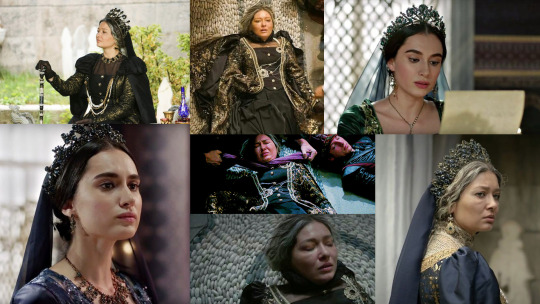
Legacy
Kösem was buried on September 3 in the complex of Sultan Ahmed. She lies between her beloved Sultan and eldest daughter, Ayşe. The palace did not give an official order on mourning, still, the people of Istanbul decided on their own to close all shops for three days to pay their respects to the deceased Kösem Sultan. Many loved her for her charities, but the fact that the people did not hate Turhan Hatice either, (actually they loved her also) suggests that she was not blamed for Kösem Sultan's death.
Kösem Sultan can be considered as the last classical Haseki Sultan and the only Valide Sultan who served as a regent three times, along with three different sultans. For a total of 27 years and 11 months, she had the third-longest reign in the history of Ottoman Empire as a Valide Sultan. She has spent a great amount of money from her amazing wealth to help the ones in need throughout her life. Although she has had a smaller complex built, she has spent less on construction than her predecessors. Rather, she tried to help those in need in a smaller, less spectacular way. According to some accounts, she went so far with her donations that when she overspent herself and in vain asked her son for help, she sold her jewelry so that she could continue what she had planned.
She is almost the only sultana who, when characterized by contemporary ambassadors, emphasized not primarily her beauty but her intelligence, prudence, and strength. Kösem Sultan was the sultana who broke the highest, who could have been at the top for a long time, but from the great heights, she finally fell down and became the only murdered valide sultana ever.
Kösem Sultan had several titles during her life: Naib-i Sultanat (regent of the Ottoman Empire), Umin al-Mu'minin (mother of all muslims), Büyük Valide Sultan (great Valide Sultan), Valide-i Sehide (martyred mother), Valide-i Maktule (murdered mother), Valide-i Muazzama (magnificent mother).

Used sources: Ö. Kumrular - Kösem Sultan: iktidar, hırs, entrika; C. Finkel - Osman’s Dream: the History of the Ottoman Empire, L. Peirce - The Imperial Harem; M. P. Pedani - Relazioni inedite; N. Sakaoğlu - Bu Mülkün Kadın Sultanları; B. Tezcan - Searching for Osman: A Reassessment of the Deposition of the Ottoman Sultan Osman II (1618-1622); Y. Öztuna - Sultan Genç Osman ve Sultan IV. Murad; G. Börekçi - Factions and Favorites at the Courts of Sultan Ahmed I and His Immediate Predecessors; F. Davis - The Palace of Topkapi in Istanbul; G. Börekçi - A Queen Mother at Work: On Handan Sultan and Her Regency during the Early Reign of Ahmed I; . Faroqhi - The Ottoman Empire and the World; C. Imber - The Ottoman Empire 1300-1650; F. Suraiya, K. Fleet - The Cambridge History of Turkey 1453-1603; G. Piterberg - An Ottoman Tragedy, History and Historiography at Play; F. Suraiya - The Cambridge History of Turkey, The Later Ottoman Empire, 1603–1839; Ö. Düzbakar - Charitable Women And Their Pious Foundations In The Ottoman
* * *
Származása és útja a palotába
Köszem szultána a legtöbb beszámoló szerint görög származású volt, aki feltehetőleg Tinos szigetén született és nevelkedett egészen elrablásáig. A legendák szerint, Anastasiának hívták és egy pap lánya volt, azonban erre utaló bizonyíték nincs. Előszeretettel híresztelték a magasra törő ágyasokról, mint amilyen Köszem vagy akár Hürrem volt, hogy papok gyermekei voltak. Ennek okai a vallási különbségekben keresendőek. Pontos születési ideje nem ismert, ám I. Ahmeddel nagyjából egy idős lehetett, így 1587-1590 között születhetett a legnagyobb valószínűséggel.
Több legenda is létezik arra vonatkozóan, hogy hogyan és mikor került a birodalmi fővárosba. Annyi bizonyos, hogy a hárembe kerülésekor a Mahpeyker nevet kapta, mely jelentése perzsául hold-arcú. Mivel az ágyasokat előszeretettel nevezték el külső vagy belső tulajdonságaik alapján, neve valószínűsíti, hogy Mahpeyker kerek arcú, világos bőrű lány volt, sőt talán szőke is. Egyesek szerint egy bosnyák beglerbég ajándékozta a lányt az ifjú szultánnak. A másik jól ismert legenda szerint Mahpeyker Handan szultána szolgálója volt még III. Mehmed életében. Így kerülhetett közel az ifjú ágyas Ahmed herceghez, akivel egymásba szerettek és flörtöltek. Amint Handan rájött a viszonyra, a lányt száműzte, hiszen nem volt illendő a tettük. Mahpeyker így minden bizonnyal valamennyi időt a Régi Palotában töltött száműzetésben.

Felemelkedés
III. Mehmed 1603 decemberében meghalt és Ahmed herceg lett a következő szultán, I. Ahmed néven. Uralkodásának első néhány hónapja igen kaotikus volt, helyette anyja és tanítója uralkodott régensként, majd Ahmed himlőt is kapott. 1604 tavaszától azonban egyre inkább saját kezébe vette az irányítást és feltehetőleg ekkor hívta vissza Mahpeykert is a száműzetésből, vagy ekkor ajándékozták neki a lányt (attól függően mely legenda az igaz). Mahpeyker hamarosan várandós lett és 1605 márciusában életet adott első szülött gyermekének, Mehmednek. Mehmed nem Ahmed elsőszülött fia volt, így Mahpeykernek minden tehetségére szüksége volt, hogy fia életét megóvja. Mindenképpen reményt ébreszthetett benne a tény, hogy Ahmed trónralépése után nem végeztette ki édesöccsét, a kisgyermek Musztafát. Musztafa életben maradása a testvérgyilkosság törvényének megingását jelentette, amely pedig Mahpeyker fiának életben maradását is garantálta.
Mahpeyher hamarosan Ahmed háremének első asszonya lett, Handan Valide Szultána ugyanis 1605 novemberében hosszas betegség után elhunyt, Ahmed legidősebb fiának anyja pedig nem érhetett fel Mahpeykerhez. A hárem dokumentumok alapján Mahpeyker 1605 végén vagy 1606 legelején kapta meg a szultántól a Haszeki Szultána rangot, amivel Ahmed egyértelművé tette, hogy második fiának anyja a kedvenc ágyasa. Rangjához kiemelt, 500 asperes napi fizetést is kapott, mely később 1000 asperre növekedett. Követi beszámolók alapján ehhez az eseményhez köthető, hogy Mahpeyker úgy döntött új nevet választ magának. Új neve a Köszem lett, melynek jelentése "vezető". A név egyértelművé tette, hogy Köszem magát vezéregyéniségnek tartotta. Ezt a követi beszámolók is alátámasztják. A velencei követ úgy írt Köszemről, mint "a szépség és okosság asszonya, aki nagyon sok tehetséggel bír, kiválóan énekel és akit a szultán mindenkinél jobban szeret... Nem mindenki tiszteli, azonban bizonyos ügyekben mindenki hallgat a szavára, hiszen ő a szultán kedvence, akit állandóan maga mellett akar tudni az uralkodó."
Az előbbi beszámoló sejteti, hogy talán feszültség lehetett Köszem és a többi ágyas között. Valljuk be ez nem lenne meglepő, különösen ismerve, hogy Mahfiruze volt az elsőszülött herceg anyja, mégis Köszem viselhette a Haszeki szultána rangot és egyértelműen minden téren a többi ágyas fölé magasodott. Egy másik beszámoló szintén alátámasztja ezt, ugyanis a szultán egyszer megveretett egy ágyast, amiért az irritálta Köszemet. Igaz, miután megverette a nőt, elrendelte, hogy kezeljék a hárem orvosai megfelelően, a köztük lévő régi szerelem miatt. Valószínűbb azonban a legendákkal ellentétben, ez az ágyas nem Mahfiruze volt, hanem egy jelentéktelenebb nő.

A főágyas
Köszem és Ahmed igen sok gyermeket nemzettek és a gyermekek születési éveiből arra következtethetünk, hogy Ahmed főleg akkor hált más ágyasokkal, mikor Köszem terhes volt. Emellett úgy tűnik, hogy Mehmed herceg születése után néhány évig Ahmed vagy monogám kapcsolatban állt Köszemmel vagy odafigyelt, hogy másoknak ne nemzzen gyermeket. Erre enged következtetni, hogy Ahmed első három gyermekének (Oszmán, Gevherhan, Mehmed) három anyától való születése után 1605-től 1609-ig nem született mástól gyermeke, csak Köszemtől: Ayşe, Fatma és Hanzade szultánák gyors egymásutániságban érkeztek. Innentől kezdve Ahmed rendszeresen fogadott más ágyasokat is, akiktől gyermekei is születtek. Köszem végül 1611 végén újra teherbe esett, ekkor Ahmed újra hívatta első ágyasát Mahfiruzét. 1612-ben így két újabb herceg jött világra a két ágyastól, Murad és Bayezid hercegek. Bayezid születése után Mahfiruze feltehetőleg elhunyt, így Köszem maradt az egyetlen befolyásos nő a háremben. Köszem utolsó két gyermeke 1614-ben és 1615-ben jöttek világra, így újabb két herceggel, Kasimmal és Ibrahimmal bővült a dinasztia.
A tény, hogy Köszemnek sok fia volt és nem övé volt a legidősebb fiú, egyértleművé tette, hogy küzdenie kellett Musztafa herceg, Ahmed öccsének életben tartásáért. Ha ugyanis Musztafa herceg életben marad, az öröklés örökre megváltozik és fiai életben maradhatnak. Köszem küzdelméről még a követek is megemlékeztek. Köszem jól ismerte Ahmed szultán természetét, így pontosan tudta mivel hathat a szultánra. Ahmed háromszor próbálta meg kivégeztetni öccsét, mielőtt végleg feladta és életben hagyta volna. Nem tudni, hogy pontosan mi győzte meg a szultánt, de Köszem állandó érvelése Musztafa életben hagyása mellett minden bizonnyal sokat nyomott a latba. Ahmed igen vallásos férfi volt, aki hitt a sorsban és úgy gondolta, ő maga kiválasztott, nem talált ugyanis más magyarázatot arra, hogy sokadszülött fiúként végül ő került a trónra. Köszem ezt használta ki, és úgy érvelt, hogy csak Allahnak van joga kiválasztani a következő uralkodót, Ahmed pedig mint aki maga sem elsőszülöttként lett szultán, könyörületet kell mutasson szintén nem elsőszülött testvére iránt. Talán Köszem arra is rávilágított, hogy amint III. Mehmed szultán beleavatkozott a sorsba és kivégeztette legesélyesebb gyermekét, maga is hamarosan meghalt. Akármit is mondott Köszem és Musztafa többi támogatója, Ahmed végül életben hagyta öccsét, azonban nem változtatott a trónöröklési sorrenden hivatalosan. Allahra hagyta a döntést.
Köszem más ügyekben is igyekezett befolyásolni Ahmedet, ám pontosan tudta, meddig mehet el. Ahmed ugyanis nem szerette volna, ha nők irányítják, így Köszem csak óvatosan igyekezett irányítani a szultánt. Bár sokan úgy tartják, hogy Köszem mozgatta a szálakat már Ahmed életében is, minden bizonnyal ez nem igaz. Köszem politikailag nem volt befolyásos Ahmed uralkodása során, csak a háremben élvezhetett kiemelt befolyást köszönhetően Haszeki rangjának és a fő eunuch, Haci Aga támogatásának. Köszem egyetlen politikai szempontból jelentős lépése az volt, hogy elérte a szultánnál, hogy elsőszülött lányukat, Ayşét egyik hű támogatójához, Nasuh Pasához adják feleségül. Azonban nem élvezhette sokáig a házasság előnyét, Nasuh Pasát ugyanis nemsokkal később kivégeztette a szultán.

A tragédia
Ahmed szultán egész életében beteges férfi volt, ám 1617-re betegsége igen súlyossá vált, a szultánt minden bizonnyal állandó fájdalmak kínozták. Akadnak olyan rosszindulatú, teljesen hiteltelen pletykák, miszerint Köszem állt Ahmed betegségének hátterében. Ez azonban egyszerűen nem igaz és nem is lehet igaz. Köszem volt az, aki a lehető legtöbbet veszítette Ahmed halálával. Fiai előtt két herceg is sorba állt a trónért, Ahmed öccse, Musztafa és Ahmed elsőszülött fia, Oszmán. Oszmán 1612 környékén veszítette el édesanyját, Köszem pedig szerette volna saját előnyére fordítani a helyzetet. Úgy vélte, hogyha Oszmánt onnantól kezdve saját fiaként neveli, azzal megmentheti saját gyermekeinek életét abban az esetben, ha Oszmán ülne a trónra egy napon. Épp ezért Köszem rengeteg időt töltött Oszmánnal, rendszeresen vitte magával, mikor Mehmed herceggel a Régi Palotában tettek látogatást Safiye szultánánál. Ahmed azonban jól ismerte Köszemet, tudta, hogy mik a szándékai, ezért eltiltotta őt Oszmántól.
Ahmed állapota 1617 novemberében már válságos volt, a 27 éves szultán végül 1617 november 22-én elhunyt. Halála káoszt okozott, ugyanis a divan tagjai nem tudták, hogy kit ültessenek trónra. Mind a két lehetséges jelölt teljesen alkalmatlan volt az uralkodásra. Musztafa herceg a sok éves elszigetelt bezárás következtében mentálisan sérült volt, nem volt beszámítható, egy kisgyermek szintjén rekedt; Oszmán herceg pedig csak 13 éves volt és nem állt mögötte egy erős anya, aki támogatni és irányítani tudta volna. Végül Haci Aga és a Seyhülislam Efendi nyomására Musztafa herceget tették meg szultánnak, remélve, hogy állapota javulni fog ha újra emberek között lehet. Musztafa trónralépésével Ahmed összes ágyasa, így Köszem is, lányaival együtt a Régi Palotába vonultak vissza. Köszemtől azonban fiait elválasztották és az összes herceget elzárva tartották ám kevésbé tragikus körülmények között, mint annak idején Musztafa herceget. Csak elképzelni tudjuk, mekkora fájdalom lehetett ez egy anya számára, elveszíteni párját, elszakítva élni fiaitól. Köszem mindemellett nagyon aggódhatott fiai életéért is.

A hamis fellélegzés
Musztafa szultánt alkalmatlansága miatt 1618-ban trónfosztották és elzárták. Az új szultán Oszmán lett, II. Oszmán néven. Köszem fiai továbbra is elzárva voltak, azonban Oszmán nem feledte, hogy Köszem gyermekkorában hogyan viseltetett irányába. Az ifjú szultán rendszeresen tett látogatást a Régi Palotában Köszemnél. Ezek alapján talán Köszem azt hihette, fiai biztonságban vannak.
Oszmán szultánt azonban rossz tanácsadók vették körül, akik csak a saját érdekeiket tartották szemelőtt. Ennek és a labilis politikai helyzetnek köszönhetően, II. Oszmán 1621-ben kivégeztette öccsét, Mehmed herceget. Oszmánt nem kedvelték a katonái, támogatói is népszerűtlenek voltak, Mehmed herceg azonban egy erős anyával, Köszemmel igazán jó jelölt volt Oszmánnal szemben. Az ifjú szultán félt a trónfosztástól és minden bizonnyal ez a félelem kergette bele a testvérgyilkosságba, amivel azonban saját halálos ítéletét is aláírta. Oszmánt 1622-ben trónfosztották a janicsárok és brutálisan kivégezték. A trónfosztás fő támogatója Musztafa szultán anyja, Halime szultána volt. Egyesek szerint a háttérből Köszem is támogatta a szultánát. Erre nincs bizonyíték, ám meglehetősen logikusnak tűnik a feltételezés.
Oszmán meggyilkolása után, újra Musztafa és anyja, Halime uralkodtak. Musztafa szultán második szultánátusa sem volt sikeresebb azonban, mint az első. Az államférfiak és a nép nem tudták megbocsátani Oszmán brutális kivégzését, így Musztafát újra trónfosztották és 1623-ban eljött Köszem ideje.

A régens
Musztafa trónfosztása után az alig 11 éves Murad hercegből lett az új szultán, IV. Murad néven. Azonban ifjú korára való tekintettel helyette édesanyja, Köszem szultána lett a régens. A nagyvezírrel folytatott levelezéseiből kitűnik, hogy Köszem úgy kívánt uralkodni régensként, hogy minden eseményre elkíséri fiát, így a divan audiencia termében is megjelenik vele. Ezen kérését a vezír elé is tárta, aki viszont ezt nem engedte meg a szultánának a hagyományokra hivatkozva és kérve kérte, hogy felejtse el ezt. Köszem ekkor még beleegyezett ebbe és a háttérből munkálkodott. Minden ekkori követi beszámoló Köszemről dicsénekeket zeng. Kiemelik, hogy egyáltalán nem olyan, mint I. Musztafa édesanyja, hiszen okos, jól ért a politikához, bölcs és megfontolt asszony, aki már Ahmed életében bizonyította mennyire erős szellem lakik benne.
Annyi fájdalommal a háta mögött Köszem Murad trónralépésével, végre újra találkozhatott fiaival és úgy hihette, életük végre nyugodtabb mederben folytatódik majd tovább. Köszem és fiai majd hat éven keresztül nem élhettek együtt, feltehetőleg csak ünnepek során találkozhattak egymással. Ez minden bizonnyal kihatott kapcsolatára fiaival. Murad nehezen kezelhető gyermek volt, Köszem több levele is fennmaradt, melyekben a nagyvezírnek panaszkodik arról, mennyire nem bír Muraddal és, hogy az mennyire nem hallgat rá, sőt olykor napokig találkozni sem hajlandó vele. Amellett, hogy az elszigeteltség éket vert közéjük, hasonló személyiségük sem segített sokat. Mind a ketten vezéregyéniségek voltak, igen erős akarattal, így nehezen jöttek ki egymással. Sokszor vitatkoztak egymással, mely viták után Köszem volt az, aki békülni szeretett volna Muraddal. Egyik nagy veszekedésük után például egy lovat ajándékozott fiának, máskor hatalmas ünnepséget rendezett neki. Emellett Köszem rendszeresen fejezte ki aggodalmát Murad egészségével kapcsolatban, ami arra enged következtetni, hogy talán Murad már ekkor egészségügyi problémákkal küzdött, apjához hasonlóan.
Köszem bár igen hosszan uralkodott, régensségéről szinte alig maradt fenn információ. Annyi bizonyos, hogy Köszem élete során mindig élvezte a janicsárok támogatását. Államférfiak jöttek, mentek a janicsárok azonban mindig mellette álltak. Miért? Köszem egy biztos pontnak tűnt a zavaros időkben, emellett, mert egy kényes kérdésben Murad trónralépése után azonnal a janicsárok mellé állt. Minden trónralépéskor a szultán jusst oszt szét a katonái között, mely évszázados hagyományt az államférfiak Murad trónralépésekor nem akartak teljesíteni. Úgy vélték, hogy az elmúlt néhány évben túl sokszor is fizették meg ezt a díjat, tekintettel arra, hogy a szultánok sorra váltották egymást. Köszem azonban nem engedett ebből, és kifizette a janicsárok jussát. Ők pedig ezt - és minden bizonnyal a később hozzájuk eljuttatott pénzeket - meghálálva a szultána oldalán álltak mindvégig.
Köszem pontos döntéseiről kevés maradt fenn. Fent maradt levelei, levélrészletei egyértelműsítik számunkra, hogy szorosan együttműködött a pasákkal és a döntéseket közösen vitatták meg. A vezető pasák direkt neki írták leveleiket, ami szintén bizonyítja, hogy minden szál Köszem kezében futott össze. Lényegében ténylegesen fia helyett, nem pedig fia mellett kormányzott.
A birodalom Ahmed halálától kezdve fokozatosan süllyedt bele az anarchiába, melyet az egyébként meglehetősen jól uralkodó Köszem sem tudott megakadályozni. Több fontos területet is elveszítettek és hiába próbálták visszahódítani ezeket, nem jártak sikerrel. Továbbá a II. Oszmán kivégzése után fellázadó Abaza Mehmed Pasa dacára annak, hogy mindenkit felelősségre vontak a gyilkosságért, nem volt hajlandó elismerni Muradot új uralkodójaként és folytatta a lázadást. Ezt sem sikerült leverni az ellene kiküldött pasáknak. Hogy tovább rontsa a helyzetet 1625-ben pestis tört ki a fővárosban és több, mint százezer áldozattal járt. 1628-ban aztán Murad is súlyos beteg lett, hetekig feküdt ágyban. Pontos betegsége nem derült ki, egyesek szerint ekkor kezdődött epilepsziája. Öröm volt az ürömben, hogy legalább ebben az évben sikerült leverni Abaza Mehmed Pasa lázadását és elfogni a férfit.
Köszem lehetőségeihez mérten igyekezett fenntartani a birodalom békéjét, ennek érdekében pedig bizonyos dolgok felett kénytelen volt szemet hunyni. Ilyen volt például az egyre terjedő korrupció. Ez sok vitát generált közte és fia között. Muradnak ugyanis sajátos elképzelései voltak az uralkodásról, példaképének I. Szelimet tekintette, aki saját kezében tartott mindent és vasszigorral uralkodott a birodalmon. Emellett Köszem maga is nagy előnyökhöz juttatta az általa favorizált pasákat, ami sokakból váltott ki ellenérzéseket. Így került például fontos janicsár pozícióba veje, Fatma szultána férje, Hafiz Ahmed Pasa. Ez azonban a Köszemet szerető janicsároknak is sok volt.

A valide szultána
1632-ben, Hafiz Ahmed Pasa kinevezése után janicsár lázadás történt, melynek során a lázadók kivégezték a nagyvezírt és Murad szultán közeli barátját, Musa Çelebit. Ennek következtében 1632 májusában Murad saját kezébe vette az irányítást és lemondatta édesanyját a régensi pozícióból és maga kezdett uralkodni. Köszem nem ellenkezett, félreállt, azonban igyekezett volna segíteni fiát, utat mutatni neki. Murad ezt nem értékelte a legkevésbé sem és nem hallgatott édesanyja tanácsaira. Murad kényszeresen igyekezett anyját távol tartani a politikától és cselekedeteiből egyértelműen kiolvasható, hogy zavarta őt anyja nagy befolyása, az, hogy az elmúlt években sokkal nagyobb hatalma volt anyjának, mint neki a szultánnak. Épp ezért, amint a hatalmat saját irányítása alá vonta, Murad igyekezett anyja embereit - így például saját sógorát, a már említett Hafiz Ahmed Pasát - sorra leváltani, hogy édesanyja befolyása alól kivonva magát, elkezdhesse egyeduralmát. Kettejük viszonyát valószínűleg az 1632-es janicsár lázadás bélyegezte meg örökre és emiatt nem tudtak közelebb kerülni egymáshoz később sem. Köszem Murad uralkodásának éveiben így lényegében csak mint valide szultána működött, a háremet igazgatta és jótékony projektjeivel foglalkozott.
Köszemnek jó érzéke volt ahhoz, hogy megnyerje az embereket. Sokszor osztott szét adományt a rászorulók között, emellett évente ellátogatott a börtönökbe, ahol kiváltotta azokat, akik tartozás miatt ültek börtönben; segített a szegény családoknak kiházasítani a lányaikat; saját rabszolgáit két év szolgálat után felszabadította és gondoskodott kiházasításukról. Jótékonysága kétségtelen, azonban fontos megemlíteni azt is, hogy Köszem volt szolgálóit egyfajta kémként tekintette és a hozzá végletekig hűséges asszonyokon keresztül tartotta sakkban azok férjeit. Így tehát azon túl, hogy jó szívvel segített sokakon, bizonyos esetekben saját érdekeit is szolgálták ezek a jótékony cselekedetek. Ez egyébként egyáltalán nem volt ritka, minden más szultána is használta ezeket a házasságkötéseket, hogy saját érdekeit szolgálja.
Köszem minden bizonnyal aggódott fia miatt, Murad ugyanis nagyon megosztotta a népet. Hosszú évek után ő volt az első szultán, aki sikeres hadjáratot vezetett, amiért a nép szerette. Ugyanakkor túlzó kegyetlenséggel uralkodott, és álszent törvényeket hozott. Halállal büntette például azokat, akik az alkohol tilalmi rendelet ellenére ittak, miközben ő maga egyre jobban süllyedt bele az alkoholizmusba. Murad alkoholizmusa mellett minden bizonnyal paranoid volt és depressziós, köszönhetően gyermekkori traumáinak, valamint annak a ténynek, hogy fiai sorra haltak meg. Egyesek Köszemet hibáztatják Murad fiainak korai haláláért is, azonban nincs erre utaló bizonyíték. Evliya Çelebi írásaiban egyértelműsíti, hogy Murad minden fia betegen jött világra és emiatt haltak meg nemsokkal születésük után.
Köszem annak ellenére, hogy Murad nem igazán vette figyelembe javaslatait, soha nem adta fel és igyekezte támogatni gyermekét mindenben. Így például, mikor Murad távol volt Isztambultól alaposan beszámolt arról, ha valaki a meghagyott utasításait nemteljesítette. Így tett akkor is, mikor egy Murad által kiadott kivégzési parancsot nem akartak teljesíteni.
Murad dacára annak, hogy saját életét a testvérgyilkosság törvényének eltörlésének köszönhette, ő maga úgy döntött, hogy a régi rendszert kell visszahozni. Emiatt a sikeres revani hadjárata után 1635-ben kivégeztette két féltestvérét Bayezidet és Szulejmánt, három évvel később a bagdadi hadjárat után pedig édesöccsét, Kasim herceget. A legfiatalabb testvér Ibrahim életét csak a herceg zavart elméje és Köszem könyörgése mentette meg. Az a tény, hogy Murad minden testvérétől meg akart szabadulni két dologra utalhat. Vagy teljesen elveszítette józan ítélőképességét és a dinasztia végét akarta, vagy pedig volt legalább egy élő fia ebben az időszakban, aki előtt meg akarta tisztítani utat.

Második régenssége
Murad a bagdadi hadjárat során súlyos sérüléseket szenvedett, alkoholizmusa, az alkoholizmus okozta májzsugora és alapvető krónikus betegsége pedig tovább rontott a helyzeten. Egyesek szerint Murad haldoklása során parancsot adott Ibrahim kivégzésére is, Köszem azonban ezt megakadályozta. Akárhogyan is 1640 februárjában Murad szultán elhunyt a revani pavilonban, pont ott ahol nemsokkal korábban kivégeztette édesöccsét, Kasimot. Halálával a dinasztia egyetlen élő férfija pedig öccse, a mentálisan instabil Ibrahim volt. Ibrahim teljesen alkalmatlan volt az uralkodásra, nagybátyjához, I. Musztafához hasonlóan maga is mentális problémákkal küzdött. Azonban Musztafával ellentétben, Ibrahim nem visszamaradott volt, hanem paranoid őrült. Mikor közölték vele, hogy bátyja meghalt, nem hitte el, amíg saját maga nem vizsgálhatta meg bátyja holttestét. Ezután volt hajlandó csupán elfoglalni a trónt.
Ibrahim uralkodásának első éveiben Köszem szultána jól tudta kezelni a szultánt és háremhölgyekkel foglalta le, ő maga pedig a nagyvezírrel, Kemankeş Kara Mustafa Pasával oldalán uralkodott fia helyett. Bár Köszem és Kemankeş Kara Mustafa Pasa nem voltak jóban, sőt állandóan rivalizáltak egymással, a birodalom érdekében mégis kiválóan uralkodtak együtt. Ez a régensi időszak könnyebb lehetett, mint az előző, a birodalom ugyanis relatív nyugalomban volt, Köszem pedig tapasztalt, érett asszonyként könnyűszerrel irányított. Az államügyek mellett igyekezett a hárem ügyeit is minden szempontból felügyelni. Így került például összetűzésbe IV. Murad Haszekijével, Ayşéval is. Ayşe lányát, Esmehan Kayát szerette volna ahhoz a Silahdar Mustafa Pasához nőül adni, akinek még Murad ígérte oda a lányt. Köszem azonban saját emberei közül szemelt ki valakit Kaye férjéül. A két nő vitája igen messzire ment és maga Kaya sem akart Köszem választottjához feleségül menni, ám Köszem nem engedett és 1644-ben hozzákényszerítette - egyébként kedvenc - unokáját az igen öreg Melek Ahmed Pasához.
Idővel Ibrahim egy bizonyos Cici Hoca befolyása alá került és fellázadt anyja uralma ellen. Cinci Hoca okkult tudományokkal foglalkozó vallási vezető volt, aki kihasználta a szultán mentális problémáit. Ennek az lett az eredménye, hogy a szultán 1644-ben a nagyvezírét kivégeztette, édesanyját pedig száműzte. Eredetileg Rodosz szigetére szándékozta küldeni anyját, de végül ágyasai meggyőzték, hogy csak egy másik palotába küldje. Köszem elkövetkezendő éveit ott töltötte száműzetésben, ám ezalatt az idő alatt is rendszeresen levelezett az államférfiakkal és igyekezett kézben tartani mindent. Valószínűleg itt írta meg jól ismert levelét is Hezarpare Ahmed Pasának, mely így szólt: "Végül sem titeket, sem engem nem hagyna életben és újra elveszítenénk az uralmat az állam felett, ezzel pedig lerombolnánk társadalmunkat." Ibrahim és Köszem viszonya olyannyira megromlott, hogy Ibrahim minden áron büntetni akarta édesanyját. Ennek érdekében Köszem összes életben lévő lányát, Ayşét, Fatmát, Hanzadét és kedvenc unokáját, Esmehan Kayát is megfosztotta minden vagyonuktól és arra kényszerítette őket, hogy új feleségét szolgálják.
Ibrahim őrült uralma egyre többeket veszélyeztett. A szultán szinte minden ok nélkül végeztetett ki embereket, és teljesen alkalmatlanoknak adott magas beosztást. Odáig fajult a helyzet, hogy 1647-ben Köszem szultána és az új nagyvezír, Salih Pasa és a Seyhülislam Abdürrahim Efendi megpróbálták trónfosztani Ibrahimot, azonban lebuktak. A következő évben a janicsárok és az ulema is csatlakozott a lázadáshoz és 1648 augusztus 8-án könnyűszerrel trónfosztották és bebörtönözték az őrült szultánt, követőit pedig eltávoltották a pozíciókból. Ibrahim szultán sorsáról is hamarosan dönteniük kellett, azonban ez nem volt egyszerű. Korábban már volt egy őrült szultán, akit trónfosztása után egyszerűen csak elzártak, erre Ibrahim esetében is lehetett volna tehát lehetőség. Ibrahim azonban túl sokaknak okozott fájdalmat, túl sokakat végeztetett ki és egyszerűen túl sok támogatója volt ahhoz, hogy életben hagyják.

A megtört anya
Mindenki Ibrahim szultán kivégzését követelte. Köszem szultána találkozott a Topkapi Palotában az államférfiakkal, hogy megvitassa velük mi legyen Ibrahim sorsa. Órákon át tárgyaltak, Köszem azonban végig megtagadta, hogy kiadja Ibrahim legidősebb fiát, Mehmedet. Így pedig nem lehetett őt kikiáltani szultánnak. Végül az államférfiak meggyőzték Köszemet, aki bár igyekezett ellenállni, idővel kénytelen volt belátni, hogy fia potenciális veszélyt jelent mindenkire: őrá, gyermekeire, államférfiakra, katonákra, az egész birodalomra. Köszemnek nem volt sok választása, mint beleegyezni fia kivégzésébe, mégis sokan elítéleik ezen döntése miatt. Be kell azonban látnunk, hogy bármit tett vagy mondott volna Köszem, Ibrahimot mindenképpen kivégezték volna. Köszem azonban ezzel a döntésével az birodalom érdekeit nézte. Hasonló döntés volt ez, mint I. Szulejmán esetében Musztafa herceg kivégeztetése. Egy igazi uralkodó nem csak apa vagy anya gyermekei számára, hanem azok felettese is. 1648. augusztus 18-án Ibrahim szultánt kivégezték, helyette legidősebb fiát, IV. Mehmedet tették meg uralkodónak.
Bár Köszem döntése logikus volt és a birodalom számára az egyetlen jó döntés, mégis úgy tűnik, ő maga belerokkant a döntés súlyába. Ibrahim kivégzése után közölte visszavonulását a Régi Palotába, az államférfiak azonban nem engedték meg neki, hogy hátalévő éveiben fiait gyászolva éljen visszavonultan. Meggyőzték a szultánát arról, hogy a birodalomnak szüksége van rá, mint régens, még egyszer, utoljára. IV. Mehmed ugyanis csupán 7 éves volt ekkor, édesanyja pedig huszas évei elején járt, túl fiatal volt, hogy ellássa a régensi feladatokat. Köszem elfogadta a felkérést és újra ő lett a birodalom régense. Cselekedeteiből és a személyiségén beálló változásokból arra következtethetünk, hogy rögesztméjévé vált, hogy ő az egyetlen, aki képes rendesen uralni a birodalmat. Az őt ért tragédiák után talán nem is meglepő egy ilyen fajta mentális probléma felbukkanása.

A diktátor
Bár az államférfiak maguk kérték fel Köszemet az uralkodásra, idővel rá kellett jöjjenek, hogy ez a Köszem szultána nem az az asszony, akivel korábban már kétszer együtt uralkodtak. Mindemellett ők azt várták Köszemtől, hogy tanítsa meg Turhan Hatice Szultánát és a kis Mehmed szultánt arra, hogyan kell megfelelően kezelni a politikai ügyeket. Tehát egyfajta betanítást vártak volna Köszemtől, ő azonban maga kívánt dönteni mindenben, a neki ellentmondó államférfiakat leváltatta.
Köszem jogát az uralkodáshoz egyre többen kezdték el vitatni, egyik ilyen divan vita során hangzott el a jól ismert beszéde is. Ekkor Köszem megvádolta a nagyvezír Sofu Ahmed Pasát azzal, hogy meg akarta őt öletni, majd így folytatta: "Istennek hála négy uralkodót láttam és én magam is hosszú ideig uralkodtam. A világ nem fog sem összeomlani sem megreformálódni a halálommal." Bár beszédéből az tűnik ki, hogy saját befolyását és fontosságát igyekezett minimalizálni, tette nem erről árulkodnak. Ugyanezen divan ülésen Köszem leszidta Karaçelebizade Abdülaziz Efendit, amiért az nem teljesítette a szultán által kiadott parancsot azonnal, hanem azt kérdezte a szultántól, hogy "kedvesem, ki tanított téged arra, hogy ilyeneket mondj?". Köszem szerint elfogadhatatlan ilyen lekicsinylő beszéd a szultán irányába és egyébként is, honnan gondolta Karaçelebizade Abdülaziz Efendi, hogy nem a szultán maga találta ki, amit mondott?! Egyértelmű tehát, hogy Mehmed szultánt mindenki egyfajta játékszernek tekintette. Köszem a saját bábjaként használta a gyermeket, ellenfelei pedig pontosan felismerték ezt, ezért száltak szembe olykor a szultánon keresztül érkező szavaival.
Emellett a háremben is semmibe vette IV. Mehmed édesanyját, Turhan Haticét. A neki járó alapvető tiszteletet sem adta meg, nem hagyta, hogy a fiatal nő bármit is kézben tarthasson vagy valide szultánaként a háremet uralhassa, Turhan azonban nem hagyta magát. A hárem tulajdonképpen két oldalra szakadt, Köszem és Turhan Hatice támogatóira. Mind a két oldalnak megvolt a saját főeunuchja, ami hatalmas káoszt okozott a háremen belül, azonban a befolyásosabb eunuch, Szulejmán Aga Turhan pártját fogta. Sokat mondó, hogy még így sem voltak képesek legyűrni Köszemet a háremen belül. Az emberek nem tudták, kinek az utasításait kövessék. És bár a valide szultána titulus a szultán anyjaként Turhan Haticét illette meg, a kötnyelv csak "kis valide"-ként hivatkozott rá, míg Köszem volt a "nagy valide". Köszem emellett a valide szultánának járó 3000 asperes napi fizetést is megtartotta magának, Turhannak csak napi 2000 asperes fizetést engedélyezett.

Az elkerülhetetlen vég
Idővel a viszály Köszem és az államférfiak között odáig fajtult, hogy Turhan Hatice támogatásával az államférfiak megpróbálták Köszemet eltávolítani pozíciójából. Köszem válaszul erre pedig azt tervezte, hogy trónfosztja IV. Mehmed szultánt és helyette másik unokáját ülteti a trónra. Ehhez a janicsárokat be kívánta engedni a palotába, hogy azok az éj leple alatt elvgezzék a puccsot, emiatt nyitva hagyatta éjszakára a hárem bejáratát. Köszem terve azonban ellenségei fülébe jutott, egyesek szerint egy Meleki nevű szolgáló által. Mások szerint Köszem nem akarta trónfosztani és kivégeztetni Mehmedet, csak rá akart ijeszteni, megint mások szerint Köszem nem tervezett semmit, ellenségeinek egyszerűen csak elegük lett belőle és kitaláltak egy történetet, ami igazolja Köszem elleni lázadásukat. A legismertebb és legtöbb támogatóval rendelkező történet azonban továbbra is az, hogy Köszem trónfosztani akarta Mehmedet, így ezen a vonalon haladok tovább.
Így amint Köszem emberei 1651. szeptember 2-án, kinyitották a kaput, Turhan Hatice emberei, a főeunuch Uzun Szulejmán Aga vezetésével bezáratták azt és kivégzőosztagot küldtek Köszem szultána lakrészébe. Turhan lényegében a janicsárok fő alakulatain kívül minden létező államférfi, sőt még a szpáhik támogatását is élvezte az események során. Emberei Köszem lakrészéhez érve bekopogtak az ajtón, Köszem azt hitte, hogy saját emberei jöttek, ezért kikiabált nekik, hogy "Megjöttetek?". Erre azonban a janicsárok hangja helyett Köszem az eunuch Szulejmán Aga hangját hallotta meg, amitől bepáikolt és menekülni kezdett. Nem pontosan tudni, hogy hogy jutott ki lakrészéből vagy ki jutott e egyáltalán, mert a leírások nem egyeznek. Egyesek szerint lakrészén belül bújt el egy szekrényben, mások szerint megpróbált kijutni a janicsárokhoz, azonban a zárt kapun keresztül nem tudott, így végül a kapu melletti szobában bújt el. Menekülése során néhány ágyas is próbált segítségére sietni és elállták a kivégzőosztag útját, egy idősebb nő pedig azt kiabálta, hogy Ő Köszem szultána, hogy ezzel nyerjen időt neki. Hiába próbálkozott, ugyanis bár a kivégzők nem ismerték Köszem arcát, Szulejmán Aga igen, így gyorsan folytatták útjukat Köszem után.
Akárhol is, de végül Köszem egy szekrényben rejtőzött el, melyből ruhájának széle kilógott, ezzel felfedve rejtekhelyét. Amikor megtalálták, kivégzői elé pénzt dobott, ezzel próbálva lefizetni őket, ám esélye sem volt Turhan hű embereivel szemben. A legenda szerint a férfiak próbálták lefogni a validét, miközben füléből kitépték gyémánt fülbevalóit, melyeket Ahmed szultántól kapott; ruháját is megtépkedték, ahogy próbálták leszedni róla az értékes díszeket. Köszem túl a hatvanon is erősen ellenállt kivégzőinek, ám végül felülkerekedtek rajta. Egyesek szerint saját hajával, mások szerint egy függönnyel fojtották meg. Az első fojtogatási kísérlet után még magához tért, a másodikat azonban már nem élte túl. Nem tudni, hogy ki volt aki úgy döntött, Köszem szultánának meg kell halnia. Úgy tűnhet, hogy a kivégzés jogszerűen zajlott le, a Seyhülislam fetwája alapján. Azonban az időbeliséget kissé megzavarja a tény, hogy a régi Seyhülislamot ugyanakkor váltották le Turhan egyik megbízható emberére, mikor a kivégzés zajlott. Épp emiatt, és a kivégzés szokásostól eltérő brutalitása miatt, felmerülhet annak a lehetősége is, hogy talán Köszem kivégzése nem volt eredetileg eltervezve, csupán menet közben csúszott ki az irányítás Turhan kezéből és a pillanat hevében az őrök kivégezték Köszemet. Utólag pedig, hogy legalizálják az eseményeket gyártattak egy fetwát az új Seyhülislámmal.
Hogy megakadályozzanak bármiféle ellenállást, Turhan Hatice és emberei az éjszaka folyamán minden olyan államférfit eltávolítottak posztjáról, aki veszélyeztette volna őket. Aki pedig ellenállt, azt fetwával kényszerítették a behódolásra. Végül sikerrel elérték, hogy helyettük a janicsárokat hibáztassa a nép Köszem kivégzéséért, így végül őket bűnbaknak kikiáltva, Köszem fő támogatóit, a janicsárok vezetőit végezték csupán ki.

Emlékezete
Köszemet szeptember 3-án temették el Ahmed szultán komplexumában, szeretett szultánja mellé. Köszem szultána halála után a palota nem adott ki hivatalos rendelkezést a gyászról. Isztambul nép magától döntött úgy, hogy három napra bezárnak minden üzletet, hogy kifejezzék tiszteletüket az elhunyt iránt. Köszem szultánát nagyon sokan szerették jótékonyságai miatt, azonban a tény, hogy Turhan Hatice iránt sem viseltetett a nép rossz érzéssel, sőt őt is szerették, arra utal, hogy nem hibáztatták őt Köszem haláláért.
Köszem tekinthető az utolsó klasszikus Haszeki szultánának és az egyetlen valide szultánának, aki háromszor is régensként tevékenykedett, három különböző szultán mellett. Összesen 27 évig és 11 hónapig volt Valide Szultána, ami az Oszmán Birodalom validéi között a harmadik leghosszabb uralkodási idő. Élete során rengeteget jótékonykodott elképesztő vagyonából és bár építtetett egy kisebb komplexumot, elődeihez képest keveset költött építkezésekre. Inkább kisebb, kevésbé látványos módon igyekezett segíteni a rászorulókat. Egyes beszámolók szerint odáig ment adakozásaival, hogy amikor túlköltekezte magát és hiába kért fiától segítséget, ékszereit adta el, hogy fedezni tudja, amit eltervezett.
Ő szinte az egyetlen szultána akit ha jellemeztek a korabeli követek nem szépségét hangsúlyozták elsődlegesen, hanem intelligenciáját, megfontoltságát és erejét. Köszem volt az a szultána, aki a legmagasabbra tört, aki sokáig lehetett a csúcson, azonban a nagy magasságból zuhant végül alá és vált az egyetlen meggyilkolt valide szultánává.
Kösem Szultana élete során több címet is kapott: Naib-i Sultanat (az Oszmán Birodalom régense), Umin al-Mu'minin (minden muszlimok anyja), Büyük Valide Sultan (nagy valide szultána), Valide-i Sehide (a mártír anya), Valide-i Maktule (a meggyilkolt anya), Valide-i Muazzama (a csodálatos anya).

Felhasznált források: : Ö. Kumrular - Kösem Sultan: iktidar, hırs, entrika; C. Finkel - Osman’s Dream: the History of the Ottoman Empire, L. Peirce - The Imperial Harem; M. P. Pedani - Relazioni inedite; N. Sakaoğlu - Bu Mülkün Kadın Sultanları; B. Tezcan - Searching for Osman: A Reassessment of the Deposition of the Ottoman Sultan Osman II (1618-1622); Y. Öztuna - Sultan Genç Osman ve Sultan IV. Murad; G. Börekçi - Factions and Favorites at the Courts of Sultan Ahmed I and His Immediate Predecessors; F. Davis - The Palace of Topkapi in Istanbul; G. Börekçi - A Queen Mother at Work: On Handan Sultan and Her Regency during the Early Reign of Ahmed I; . Faroqhi - The Ottoman Empire and the World; C. Imber - The Ottoman Empire 1300-1650; F. Suraiya, K. Fleet - The Cambridge History of Turkey 1453-1603; G. Piterberg - An Ottoman Tragedy, History and Historiography at Play; F. Suraiya - The Cambridge History of Turkey, The Later Ottoman Empire, 1603–1839; Ö. Düzbakar - Charitable Women And Their Pious Foundations In The Ottoman
#Ahmed I#handan sultan#halime sultan#Mustafa I#Mahpeyker#Kösem sultan#Osman II#Sehzade mehmed#sehzade kasim#sehzade bayezid#ayse#fatma#mahpeyker kösem#valide-i muazzama#muhteşem yüzyıl kösem#magnificent century kösem#kösem#Murad IV#Mehmed III#Turhan Hatice Sultan
70 notes
·
View notes
Note
Is it just me or after looking back at the series Halime does not appear as smart at all as her fans make her out to be? Like for real? She does so many bad choices one after another and whenever she hits a right mark is mostly by sheer good luck (she is gambling with her life almost) but she is so rash, unpredictable in conduct and honestly so quick to act that she makes such an easy target for almost anyone, just show her a piece of cheese and she will run into that trap like a silly mouse
I don’t truly find her the brightest crayon in the box at all, especially compared to the other women of the SOW, perhaps that’s why she never became the most powerful sultana ever seen as she dreamed herself, such an insecure and unstable woman I would say
Tbh, in contrast to that, I grow to symphatize with Handan’s character more, even if she is seen as the weaker valide, I think she has more substance than people give her credit for and knew enough to not shake the boat too much when Safiye was in power
Well, I am a Halime stan so I'm going to defend her a bit here. Bear in mind that Halime is, for much of the series, in an extremely desperate situation. Mustafa's life hangs in the balance. And she does make a lot of mistakes, but it felt to me like most of them came more from desperation than stupidity. That said, she was naïve to trust Safiye and she definitely isn't as smart as - say - Hürrem. It felt to me like she had that same trait that Hürrem did: both women make mistakes when they're under too much pressure. Halime just takes this futher.
I'll be honest. Handan never really spoke to me as a character all that much. You are right that she was right not to rock the boat, but that was from anxiety more than it was cunning. She made her own fair amount of mistakes as well if I remember correctly.
#halime sultan#handan sultan#magnificent century: kösem#magnificent century#answered#zealousdreamclodwagon
6 notes
·
View notes
Note
What are your thoughts on Fahriye? Do you think she deserved a better ending or did she have it coming? I thought she had potential personally.
Fahriye along with mehmed giray love story is ruined in the worst way possible.
Fahriye is the unfortunate princess who is hopelessly in love with a man that getting with him is impossible so she becomes desperate. Driven by her desperation she goes so far even if it means ending the dynasty. Here is a thing she wasn’t tricked by Shahin , she knew exactly what she was doing , she did it out of love and desperation which shows how much her bond with Mehmet is strong then….TIMS ruins everything.
Before shitting on the show production let’s take a moment to talk about Fahriye and Safiye. You can see that Fahriye is well aware of her mother bad deeds (unlike in MC Hatice is not aware of Hafsa problematic acts) but she still takes bride in her mother. She doesn’t need to say it , she visibly looks proud specially when Handan enters (ie. circumcision ceremony of Ahmed) or when she went to beg ahmed not to marry her then later insults him, tells him the ruler is her mother and no one considers him the padisah.
Fahriye is married to someone she hates again .Despite knowing that Ahmed is basically keeping an eye on her , she runs away risks it all with mehmet and mehmet too risking it all cause who else would she run away with? Again proving their love is stronger than anything so Fahriye is willing to leave the luxury of being a sultana in order to stay with mehmet in return.
Now back to the ruined….sorry amazing love story. Fahriye is exposed, what does mehmet do to save her? Nothing like even Dervish contributed more in letting her live longer. Mehmet betrayal to her at the end is the worst plot I’ve ever seen. They preach about how strong their love is only for mehmet to betray her that easily? What did he gain? Nothing. What did he lose? A lover and a brother.
Fahriye character did have the potential, specially that she looked like she’d be powerful in the first episodes. To make Kosem win , they ruined her like that. The only word I can describe the betrayal with;stupid.I know the concept of mehmet betraying fahriye is shit in any form but at least they could’ve made mehmet have any kind of personal gain in order for him to betray his love like that. I guess the only logical end for her after getting exposed is to die what else could happen to someone who tried to kill the sultan and his brother?
#muhtesem yuzil kosem#mehmet giray#fahriye sultan#fuck mehmet for betraying Safiye#shahin giray deserved better
8 notes
·
View notes
Note
I love your deconstruction of Kosem's character a lot. Btw, who are your favourite female characters in both the MC and MCK world?
Ah thank you so much! 🥰
Such sweet messages just make me still want to keep this blog running even though tumblr is dying and it feels so lonely here now.
I’m mostly a stanner of less powerfu/more underrated characters, Kösem is literally the only of most important SOW sultanas I truly stan in the shows.
MC: Mahidevran, Hatice, Fatma Sultan, Şah, Mihrünnisa, Defne, Gülfem, Firuze (ahahah) ,Mihrimah (more as character creation I love than character I have strong emotional bond with, not saying she’s a bad person though)
MCK: Kösem of course (all Kösems, but most of all Nurgül!Kösem) Handan, Hümaşah, Gevherhan, Telli Hümaşah, Gölge, Lalezar, both Ayşe Sultans, Şivekar
I like a lot more of course!
Out of big “5″,*unpopular opinion time* I really dislike Hürrem, she’s a fine character creation, but never spoke to me at any level & I personally find her annoying (and while I understand that/why she has her fans, I still find her vastly overrated tbh, I think without Meryem and her “meme expressions” she wouldn’t be as worshipped, as we can see how Vahide! Hürrem is treated by the fandom and it’s still very much the same character at the core) *end of unpopular opinion time*. I find Mihrimah and Nurbanu interesting&entertaining characters, Safiye was an iconic villain, and well... I really, absolutely hate MYK Turhan 😊.
- Joanna
#Anonymous#answered#muhteşem yüzyıl#magnificent century kosem#magnificent century#muhteşem yüzyıl kösem#mods opinions
74 notes
·
View notes